Iran Part 4: From Shiraz via Persepolis to Yazd
Dazzling mosques, gardens full of poetry and ancient treasures (41)
Shiraz: Pink tiles and saffron ice cream
It’s still early in the morning when we stroll half-asleep through the empty alleys of Shiraz. We arrived here only yesterday after a 10-hour bus ride from Kerman, finally putting us on the main tourist route of a classic Iran trip. Shiraz (population about 1.6 million) is the capital of Fars province and arguably one of the most beautiful cities in the country, along with Yazd and Isfahan, and known as the city of poetry, nightingales and orange trees. But right now, I only care for coffee and fortunately we find one, surprisingly even in a Starbucks cup. Our destination in those early morning hours is the famous Nasir al-Molk Mosque, also known as the pink mosque.
We turn into an inconspicuous side street and for the first time in Iran we see other foreign tourists. The reason for the unusually early gathering in front of the mosque is the special architecture of the Nasir al-Molk mosque, one of the most photographed places in Iran. In the morning hours, the first light of the day falls through the colored and artistically designed windows in such a way that the floor and the columns are illuminated by thousands of lights in all colors, a true kaleidoscope of colors. We are lucky, because we are almost alone in this magical place. This is one of those places that you know from numerous pictures and documentaries and yet you are completely enchanted when you stand there yourself. Maybe this special play of light should motivate the believers to come to the mosque for the morning prayer?
The Nasir al-Molk Mosque was completed in 1888 during the Qajar period and is still actively used by the community. Besides the well-known stained-glass room, the mosque is rather plain in design. However, the colorful tiles used in Shiraz are striking. Otherwise, the majority of tiles used in Islamic architecture are blue and turquoise, but here in Shiraz they are pink and yellow, often depicting birds, flower tendrils and, surprisingly, sometimes even European buildings.
Short Notes Shiraz
How long for Shiraz: Two days is enough for sightseeing, three days if you want to make a day trip to Persepolis.
Where to stay: Taha Traditional Hostel (affordable traditional hotel at a central location), Darb-e Shazdeh (gorgeous boutique hotel with the best breakfast).
Where to eat: Breakfast at Jouleb Bistro, Doosi Restaurant (a bit hidden with a nice backyard), Qavam Restaurant (central restaurant with all the classic dishes).
Local specialties: Kalam Polo (rice with minced meat), Shirazi Salad (salad of onions, tomatoes, cucumbers), Ghanbar Polo (sweet and sour rice dish).
What you shouldn’t miss: Visiting the Nasir-al Molk Mosque in the early morning hours, having a coffee in the Tarapood Art Gallery, enjoying the atmosphere at the Hafiz tomb in the evening.
After the visit, we enjoy a sumptuous breakfast with the other travelers and exchange experiences, probably a rare moment for all of us, because we haven’t met so many others yet, although Shiraz is supposed to be one of the tourist highlights. We are an interesting mix of cyclists and a couple traveling in a car with a roof tent. And as usual when meeting with other long-term travelers, there is always far too little time and so much more to talk about. We have breakfast in the old town and enjoy people watching on the beautiful main square in front of the Vakil Mosque. In this square Shiraz has almost European flair with the traffic-free alleys and the many open-air cafes.
Me and my goldfish
It’s a busy time in Iran so close to the Persian New Year Nowruz (March 20) and many people are busy shopping for the festivities. During the New Year vacations, most Iranians visit their families or use the time for traveling. But first, there is serious shopping to be done for the Haft-Sin, the table with the seven symbolic items that begin with the Persian letter "S". Just before the turn of the year, the entire family gathers around the Haft Sin and waits for the start of the new year. The richly decorated table is displayed in most Iranian households during the New Year vacations, and numerous stores also put up their version of it, always a popular photo subject. But what exactly is on the table? The Haft-Sin table varies from family to family, but these seven things are traditionally always included:
The seven "S" of the Haft-Sin table:
Sabzeh = sprouts (symbolizing rebirth)
Sekeh = coins (symbolizing prosperity)
Sir = garlic (symbolizing health, protection)
Senjed = silver berry (symbolizing love and joy of life)
Sumaq = spice (symbolizing taste of life)
Serkeh = vinegar (symbolizing age and patience)
Sib = apple (symbolizing health)
The Haft-Sin tables are often complemented with a mirror (for self-reflection or purity) or colored eggs (for fertility). In addition, many families also buy goldfish, a symbol for perpetual life. After the holidays, they’re released into streams and rivers, which can lead to overpopulation and displace the native fish in the waters. We feel sorry for the many goldfish that circle in jars that are far too small and often in murky water. Many Iranians don’t agree with this tradition anymore and thus nowadays also plastic fish are sold. Nevertheless, we see a young couple sitting next to us in the café with a plastic bag with gold fish lying on the table while they’re having their breakfast. Predicate: Only in Iran.
The ruler Karim Khan Zand gave the city of Shiraz 250 years ago not only a period of peace and prosperity, but also left architecture at its best. A fine example of this is the Vakil Mosque, which we visit after our breakfast. A total of 48 striking marble columns and magnificent tile work full of floral motifs can be found in the prayer hall. Next to the mosque is a restored hamam and the beautiful covered Vakil Bazaar, which invites you to linger.
Spring time in the city of poets and gardens
We spend five nights in Shiraz and visit the famous gardens of the city, the old fortress, a beautiful madrasa and of course the bazaar. We especially like the Bagh-e Naranjestan, the orange garden. A lovely garden encloses a delightful pavilion that was once owned by one of Shiraz’s wealthiest Qajar-era families. The pavilion’s mirrored entrance hall opens onto rooms covered in a myriad of intricate tiles, stained-glass windows and more mirrors. The pretty garden is extremely popular and young people are posing in front of the magnificent building and families are enjoying saffron ice cream. Spring is definitely making promises outside.
The Shah-e Cheragh shrine, one of the country's most important Shiite pilgrimage sites, is more conservative, but no less magnificent. It’s the mausoleum for Sayyed Mir Ahmad (835 AD), a brother of Imam Reza (the eighth Imam of the Shiites). The tomb is located in a dazzling shrine of mirrored tiles and countless finely crafted tiles cover the dome above the tomb. The faithful come here from all over the country and touch the tomb in great reverence, sometimes weeping. Women have to wear a chador and the visit is only possible with a guide. But we don’t feel that comfortable when we visit a shrine, because we always imagine that we are being watched critically from all sides and I feel half naked with my sandals under the chador compared to the other women that are completely covered in black and also wearing black socks and shoes.
At tonight's evening program we feel much more at ease. We see our friends Bahar and Rahil again, whom we met on Qeshm Island. Although they both worked that day, they take their time to show us the city in the evening. Together we visit the Tomb of Hafez (1315 - 1390), one of the most famous Persian poets. Especially after sunset, many couples come here, reciting verses together and strolling through the garden holding hands, and we also see some people sitting in the garden completely immersed in their poetry books. We’ve never been in a country with such a great love for their poets as Iran. Iranians have a saying that every home must have two things: first the Quran, then a collection of the works of Hafez. This 14th-century Iranian folk hero is loved and revered and almost every Iranian can quote his work, bending it to whichever social or political persuasion they subscribe.
The Sufi Hafez saw life as too great to be dictated by narrow precepts and in his poems, there are many allusions to love, wine and drunkenness that can be read on different levels. Scholars, of course, take this to mean an allusion to divine love. We wonder if the many young couples here also understand it that way? In any case, the significance of Hafez's poems in the lives of Iranians even today and are for example used for fortune-telling. One asks a question and then, with closed eyes, opens a random passage in the Divan and finds the "appropriate" answer there. At the exit from the mausoleum, this task is performed by a bird, which picks out a suitable poem for the customers. Unfortunately, we didn’t let him do his job and thus know nothing about the outcome of our journey.
After a nice dinner together, Bahar and Rahil want to introduce us to a popular dessert and we head back downtown and get in a long line and order what everyone else orders: Saffron ice cream in carrot juice. A sweet farewell to the city of poetry.
Hippie vibes in Ghalat
After a few days full of sightseeing in Shiraz, we continue by bike to Yazd and ten exhausting days with a lot of headwind follow. But first two surprises are waiting for us: a wonderful invitation and a nice evening with music and good conversations. While we are exploring Iran, we get a message from Said, a young Iranian, who’s now living in our hometown in Switzerland. His parents are still living in Shiraz and he invites us to visit them. They live just outside Shiraz in a village where the famous Shiraz grapes thrive. Said's mother has prepared a vegetarian feast especially for us and we spend a few pleasant hours with them and are once again overwhelmed by the Iranian hospitality. Said has a wonderful family and it’s certainly not easy when you can only see each other every few years and of course only in a country where Iranians can enter visa-free such as Turkey or Armenia.
We continue cycling to the small mountain village of Ghalat, which has gained a certain fame among Iranian backpackers with its fresh air and waterfalls. In recent years, more and more Iranians are traveling through their country by hitchhiking in search of adventure and some freedom. We visit the musician Ramin, who gives us a private saxophone concert. It turns out to be a long wonderful evening in his cozy house. Cigarette smoke is in the air, every now and then someone plays an instrument and we sit on carpets in the living room and enjoy the special atmosphere and the conversations with travelers from Iran, who stay here for a while before they move on with their trip. In the evening, we unroll our mats on the floor and go to sleep, exhausted but happy. It's nice that there are such free spaces in Iran.
Nowruz in Persepolis
Only 55 km northeast of Shiraz is the quintessence of Ancient Persia, the 2500-year-old city of Persepolis, known to Iranians as "Takht e-Jamshid" (Throne of Jamshid, a figure from Persian mythology). The UNESCO World Heritage Site is one of the major tourist sites and to our surprise we see only two other foreign tourists here.
Persepolis didn’t serve as a residence city as we assumed, but mainly for representation purposes and was only occupied seasonally for certain celebrations, especially for Nowruz. The Iranian nobility and the tributary parts of the empire came to Persepolis to offer their gifts to the king. And without having planned this, we’re here on Nowruz, the Persian New Year and of course it’s quite crowded. Already along the road to the ancient ruins, we pass tents and families having a picnic everywhere, one of the favorite past times of the Iranians.
The founder of Persepolis, King Dariush the Great (522 - 486 BC), had a vision of a multicultural state in which a diversity of ideas prevailed instead of dictatorial oppression. And of course, that's why Dario likes to introduce himself as Dariush in Iran, making the locals smile. Experts from all parts of the vast ancient Persian Empire, which stretched from Egypt to India, built Persepolis, mixing many styles. If territories were conquered, the culture there wasn’t destroyed, but instead elements were adopted and incorporated into the building style.
After almost two centuries, the soldiers of Alexander the Great destroyed the city in 330 BC. When he arrived at Persepolis, it was among the most impressive places in the world and when he left it was a ruin with just a few remaining palace columns. But he also unintentionally secured Persepolis for the future as the clay tablets were hard-baked by the fire and thus preserved for the long term. The inscriptions provided researchers with important clues about life at the time. They found out that men and women received equal wages and that the city wasn’t built by slaves, but by paid workers. In the 1930s, European archaeologists began excavating the site, and today almost everything has been uncovered and rebuilt.
Through the Gate of All Nations, one enters the massive complex and reaches the different palaces. A highlight are the elaborate reliefs on the staircase of the audience palace which are surprisingly detailed being 2500 years old. On them you can see 23 delegations from the entire Persian Empire, which came here for festivities bearing gifts to the Achaemenid king. And while many ancient cities require a lot of prior knowledge or at least imagination, Persepolis has something we’ve never seen before: 3D glasses that reconstruct the buildings in all their glory. We are thrilled and spend almost a full day in the enormous complex.
After visiting Persepolis, we stopped at nearby Naqsh-e Rostam, the spectacular necropolis of the Achaemenid kings. Magnificent structures in the shape of a large cross, carved into the rock face over ten meters above the ground. It’s strongly reminiscent of the rock city of Petra in Jordan. Facing the cliff is a mysterious building that is thought to be an Achaemenid fire temple or a treasury. Even though it’s early in the morning when we visit, the site is already crowded and Iranians are trying to have a picnic next to the rock tombs, which is not allowed for once. We are trying to get away from the crowd and find a quiet place to spend the night and to celebrate the Persian New Year, welcome to 1401!
Exhausting cycling days on our way to Yazd
The route from Shiraz to Yazd is definitely not one of our favorite cycling stages. We fight with heavy headwinds and a barren landscape. A guy on a motorbike follows us and tries to steal something (not successfully) and then I am also harassed by a troublesome man. Our camera breaks down and we experience our first sandstorm while cycling the Abarkuh desert. We curse at the many restrictions in Iran, the slow internet and the heavy traffic and some days it’s hard to stay positive. The motivation of reaching Yazd and enjoying some rest days there keeps us going. Luckily, there are also some very nice experiences on this route.
After leaving Persepolis we’re stopping in a village for lunch and would like to eat falafel sandwiches and drink tea. But this combination doesn’t exist here and the shopkeeper tells us to follow an older woman for the tea. We assume that she will simply take us to a tea shop, but we’re here in Iran and one must always be ready for surprises. The woman, Tayabeh, doesn’t bring us to a tea shop, but instead to her house and prepares tea especially for us. Her son Mohsen also joins us and we aren’t only invited for lunch, but he also picks up the ordered falafel sandwiches and pays for them. Thus, we spend completely unexpectedly a few hours on an Iranian carpet and talk with hands and feet and leave with a huge smile in our face.
On the road Mohsen catches up with us again by car and gives us the tip that we should definitely visit the old Royal Road, which isn’t mentioned in any guide book. We turn off at Pasargad, here is the tomb of King Cyrus. But the crowds discourage us and instead we look for a campground away from the crowd and follow a gravel road. As luck would have it, we actually camp right next to the old Royal Road, which we visit the next day. 2500 years ago, a road was built into the rocks that connected Persepolis with the city of Susa in the southwest of the country and it stretched even further all the way to Sardes in Western Turkey over a total of 2400 km. King Dariush I built the road to facilitate communication throughout the provinces. A special feeling to walk on so much history. No human being far and wide and a wonderful landscape in front of us. Such moments motivate us to continue cycling.
I’m still standing after all this time
The next highlight is a tree. Yes, you read that right. There are three very old cypress trees in Iran and two of them are on our route. The cypress is an important symbol and stands for life, immortality and beauty and the evergreen tree is depicted on numerous fabrics, carvings and paintings in Iran. Actually, not one day goes by in Iran that we don't see a cypress tree displayed somewhere. The cypress of Abarkuh is said to be 4'500 years old and belongs to the oldest living creatures in the world (!). It has something touching how numerous Iranians visit the cypress every day and take a break in the Art Café and marvel at Iran’s oldest living heritage.
The pleasant city of Abarkuh has even more interesting sights to offer like the magnificent Aghazadeh Historical House, where we get to spend the night. This beautiful mansion from the Qajar dynasty with richly decorated wind towers has made it on the 20'000 Rial bill. As soon as we enter the beautiful courtyard, we’re surrounded by a family asking us for a selfie, although we’re completely exhausted after this long desert stretch with strong headwind. After our photo session, we climb up to the roof and enjoy the panorama with the wind towers and the balmy desert night.
Now we’ve only got a 2600 m pass to conquer and then a long descent to the desert city of Yazd awaits us. And in and around Yazd we get to see some very special things like men wielding wooden clubs, a shaking minaret and a pretty tower for pigeons. But more on that in our next blog: the 10 highlights of Yazd.

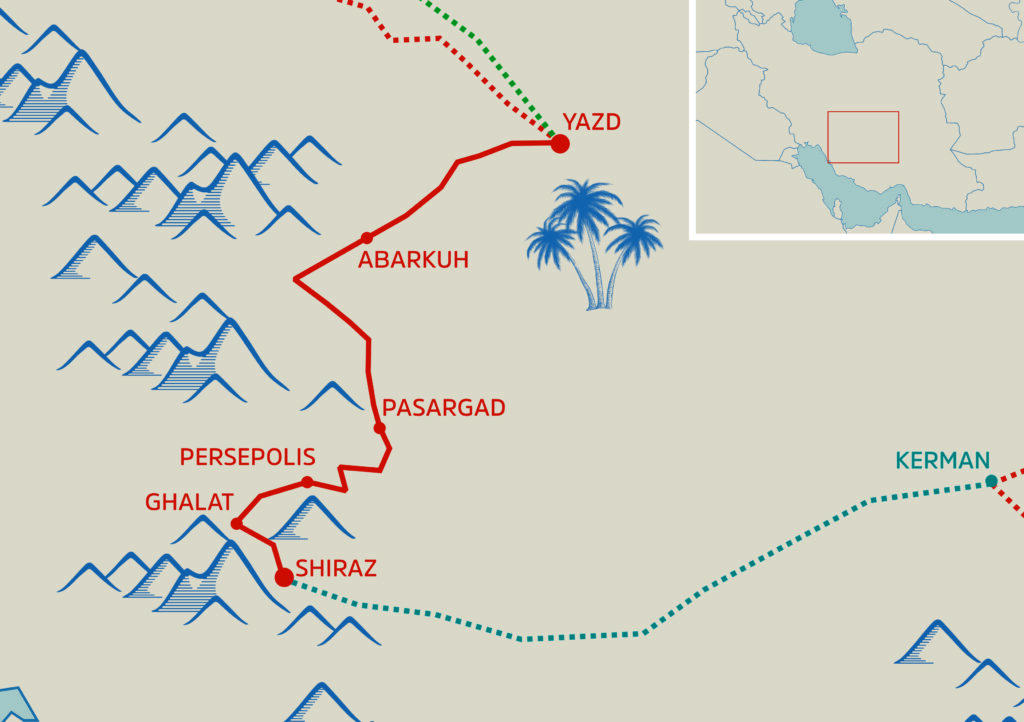
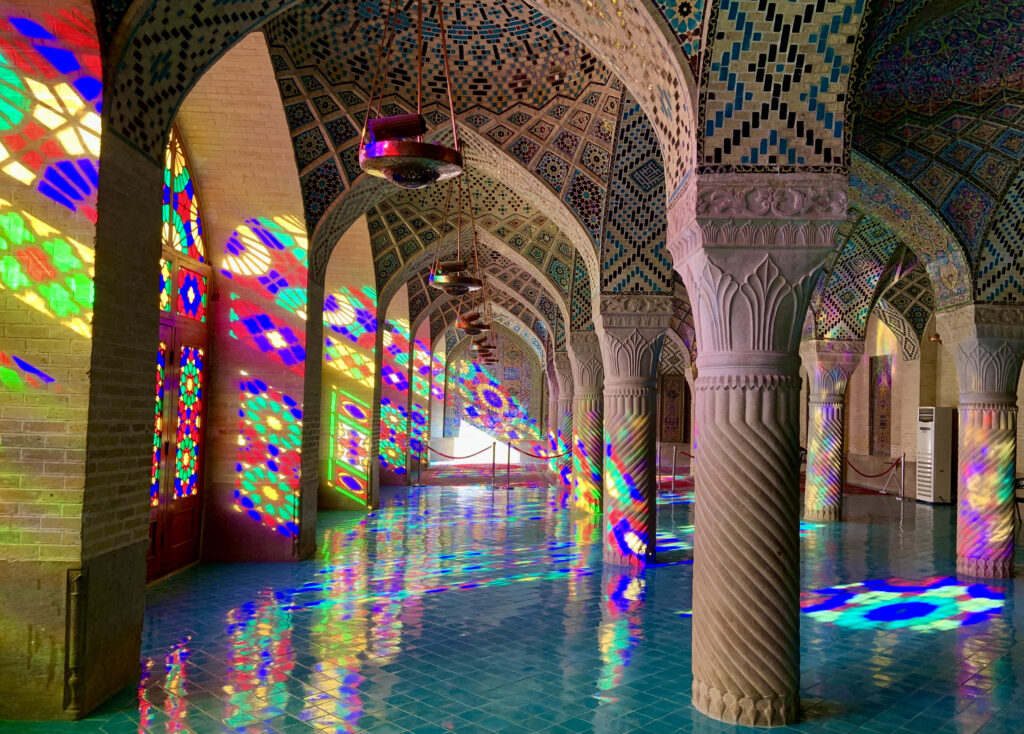
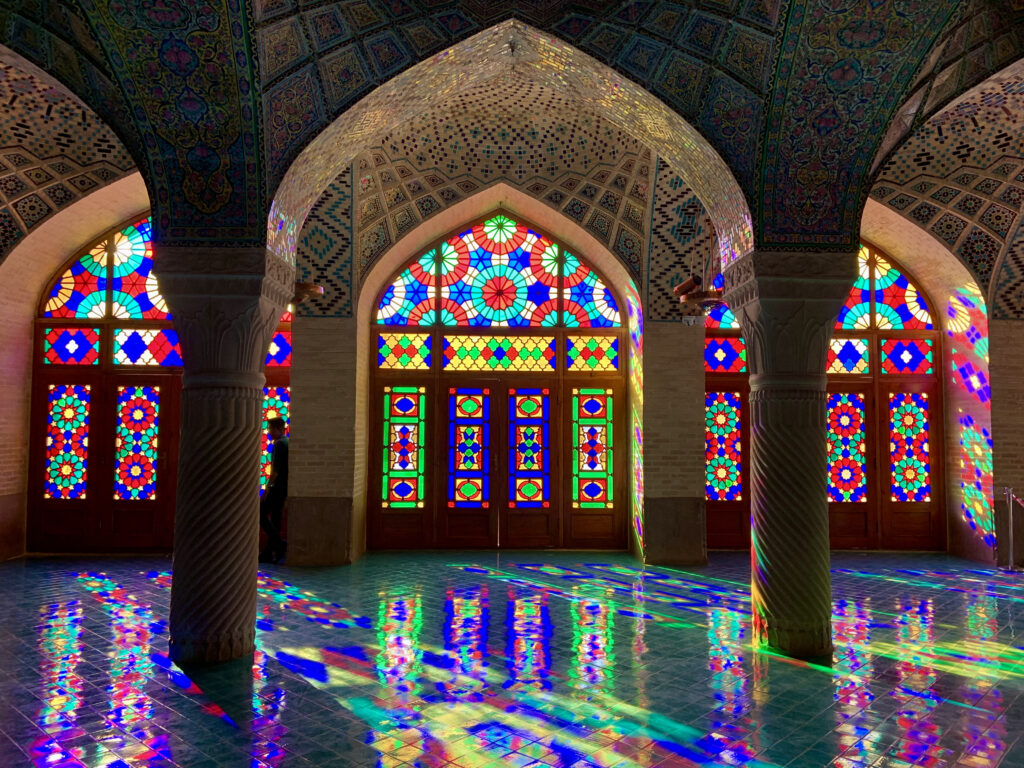
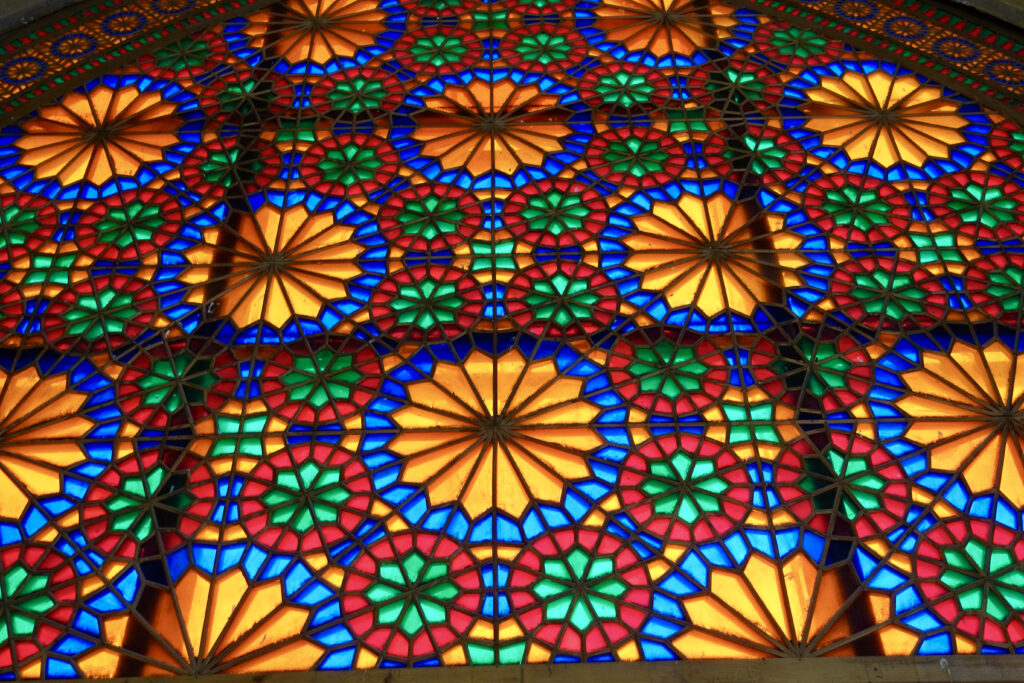
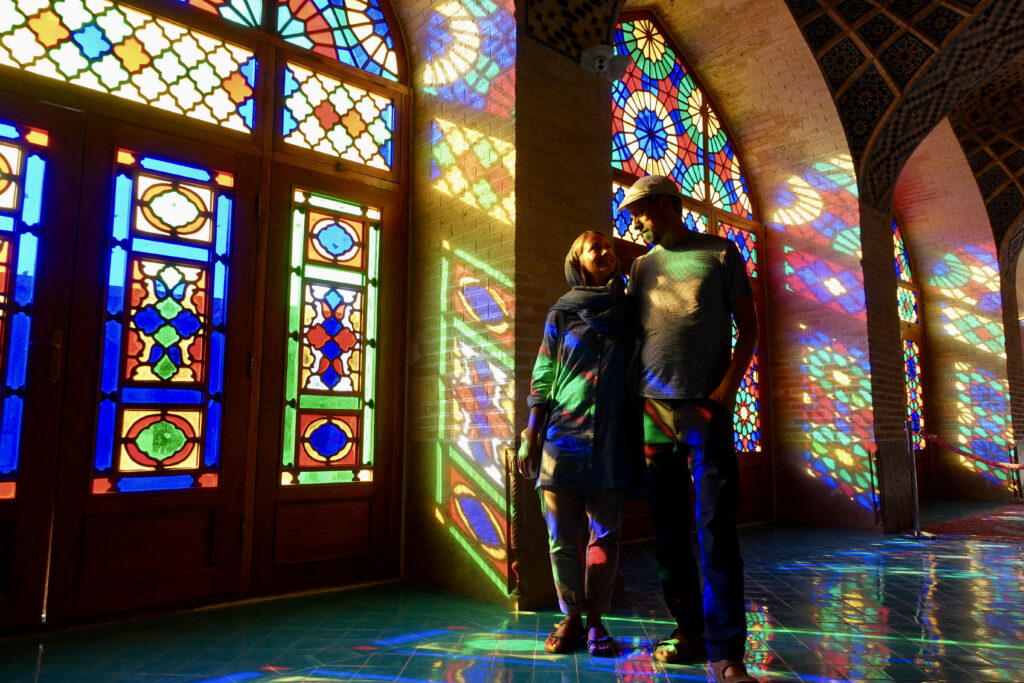
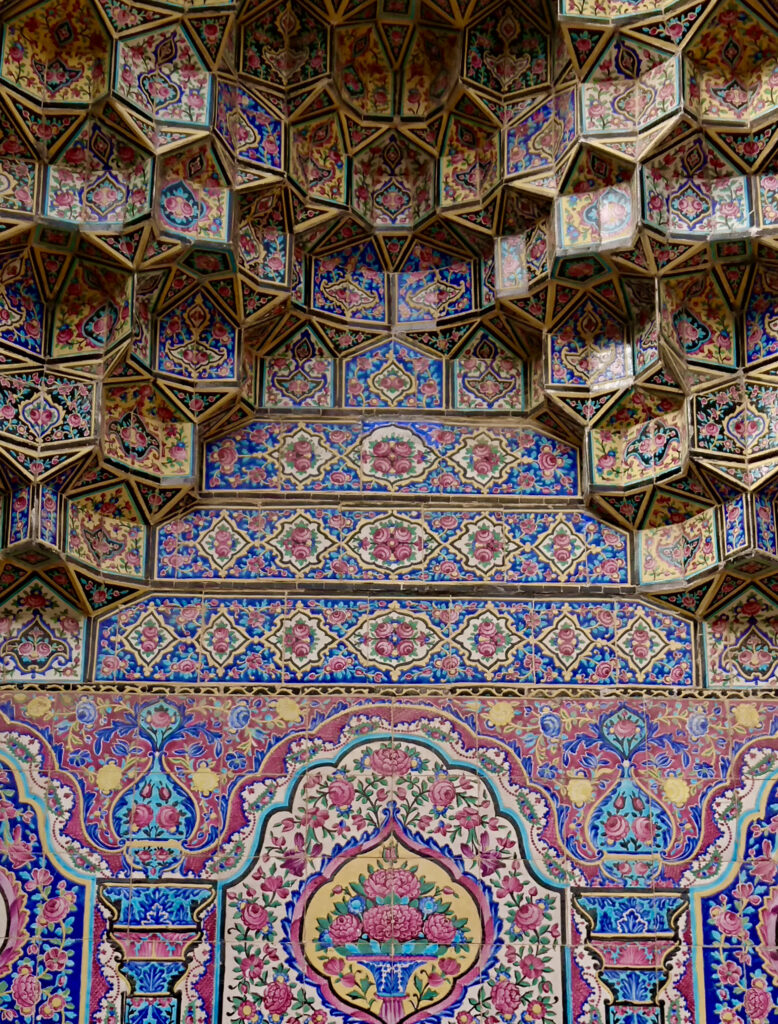
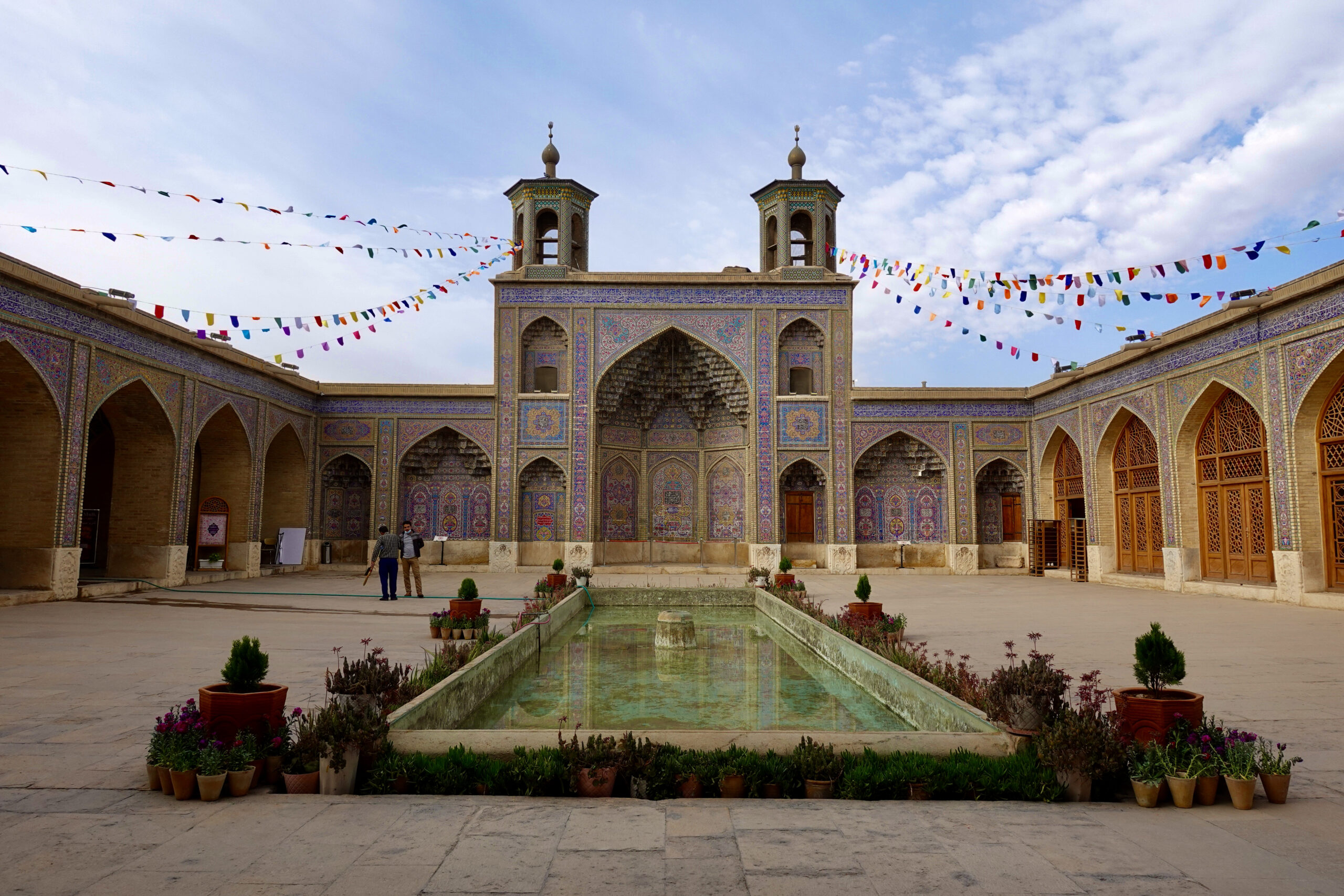
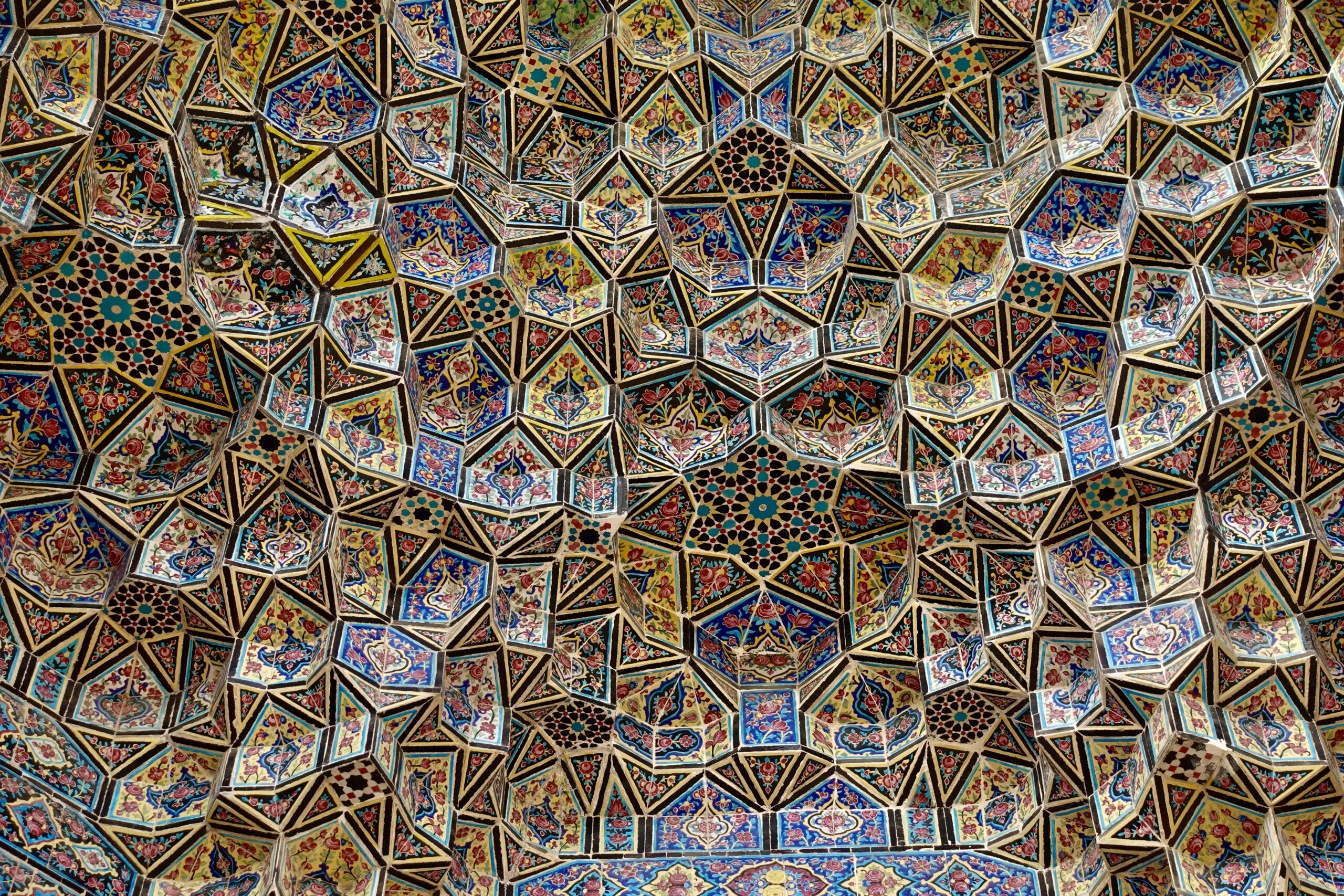
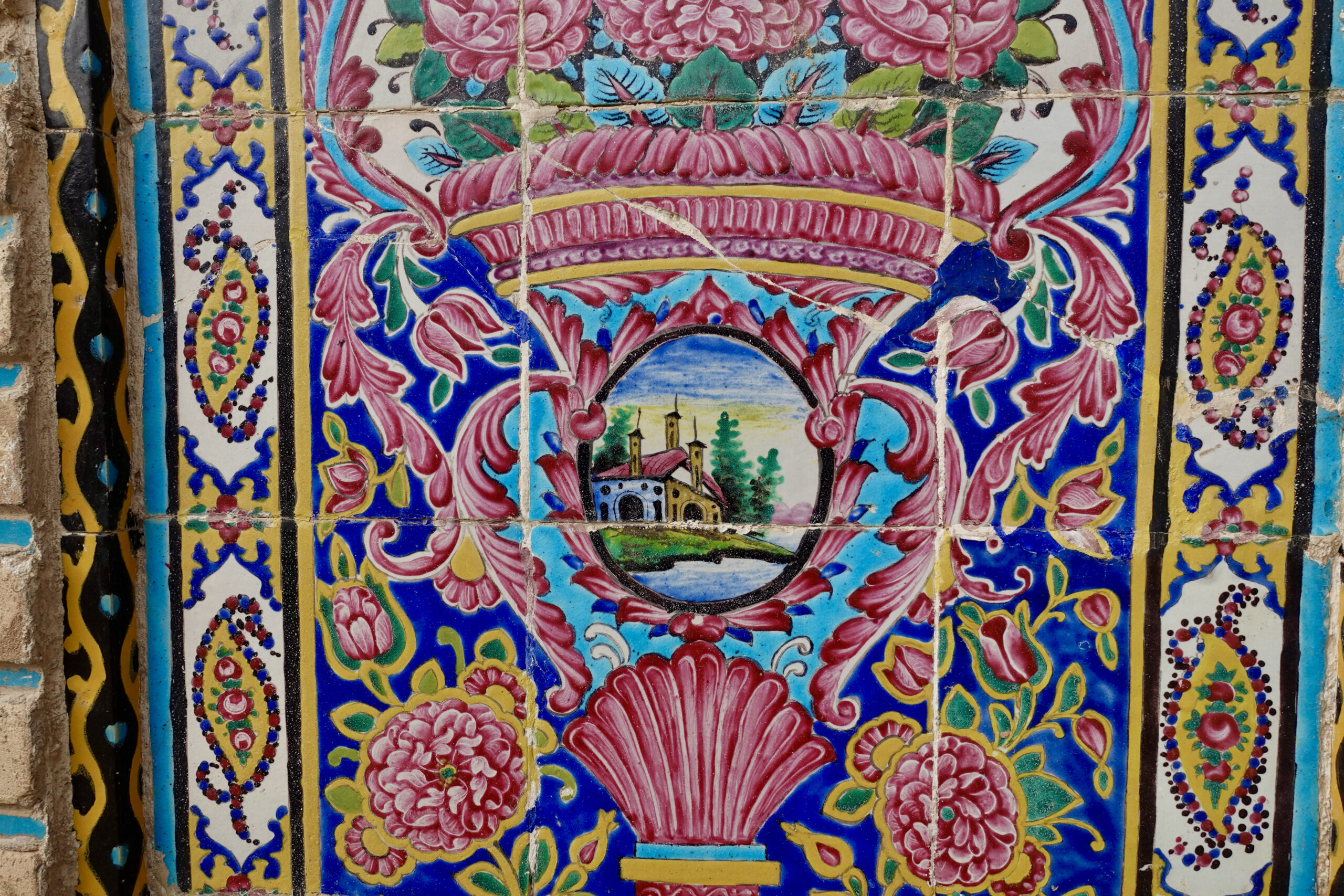
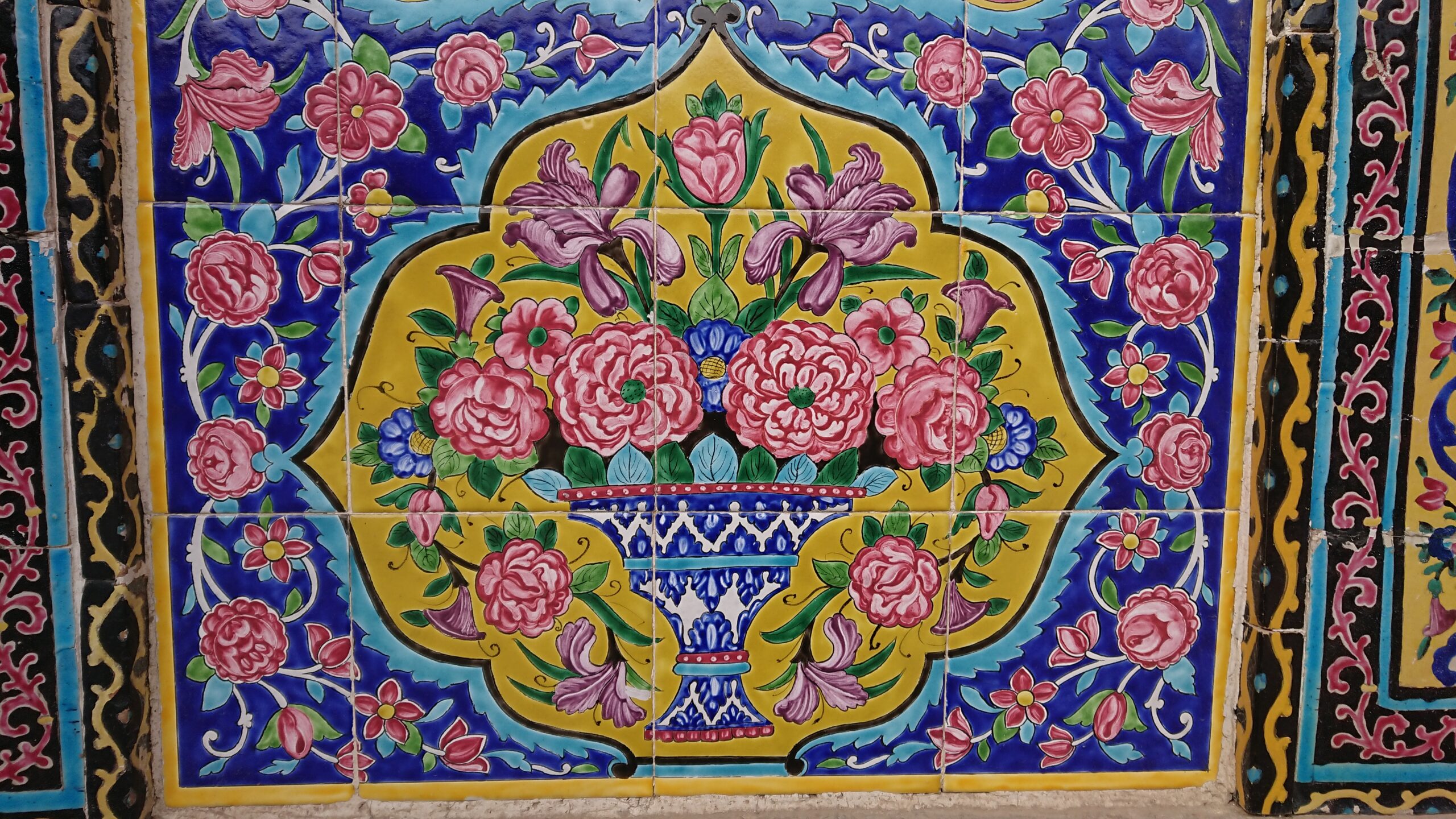
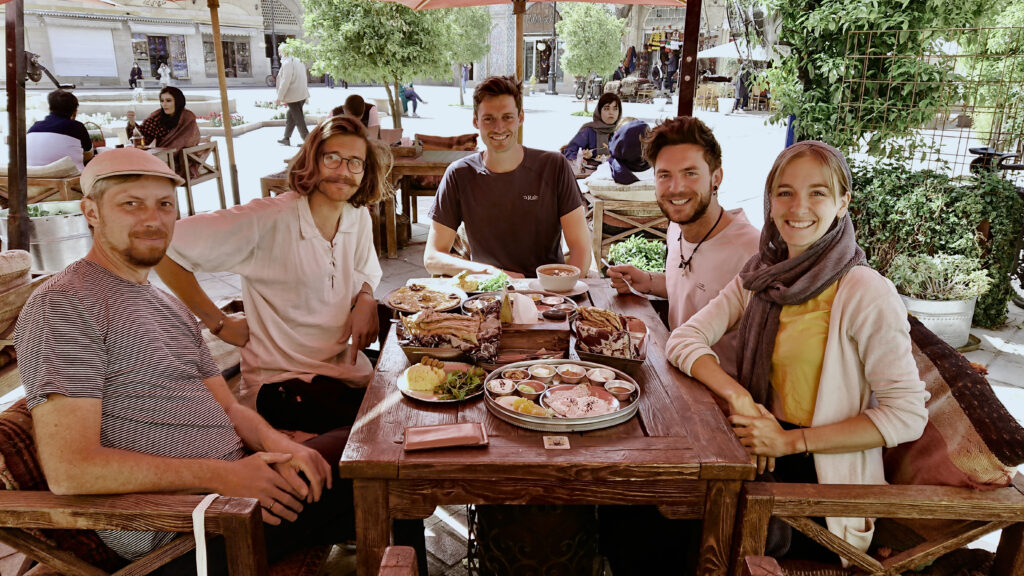
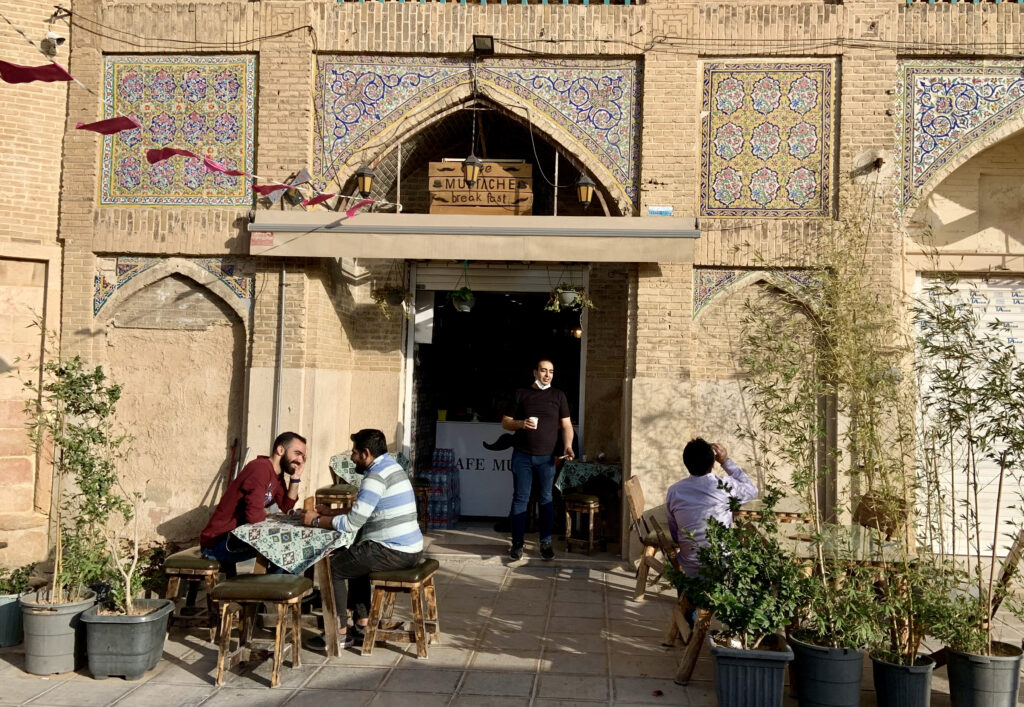
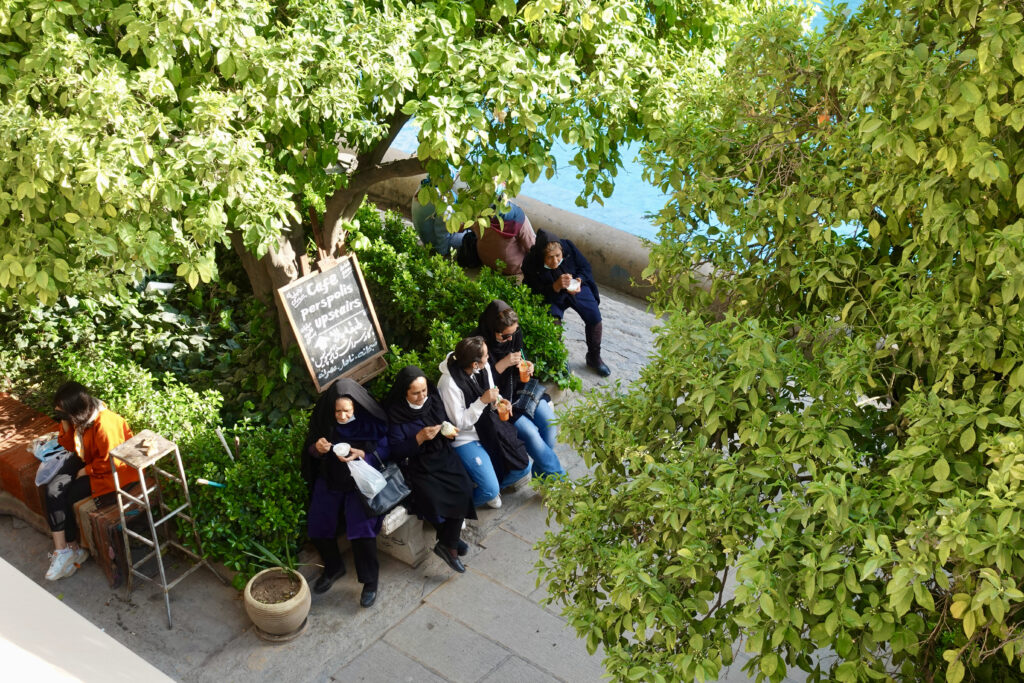
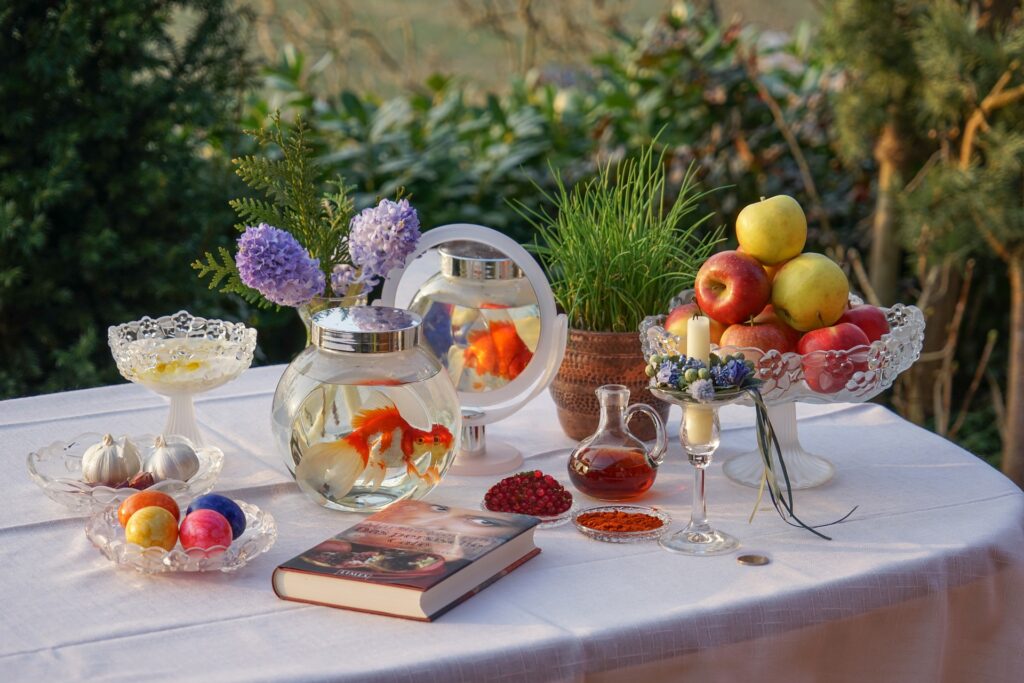
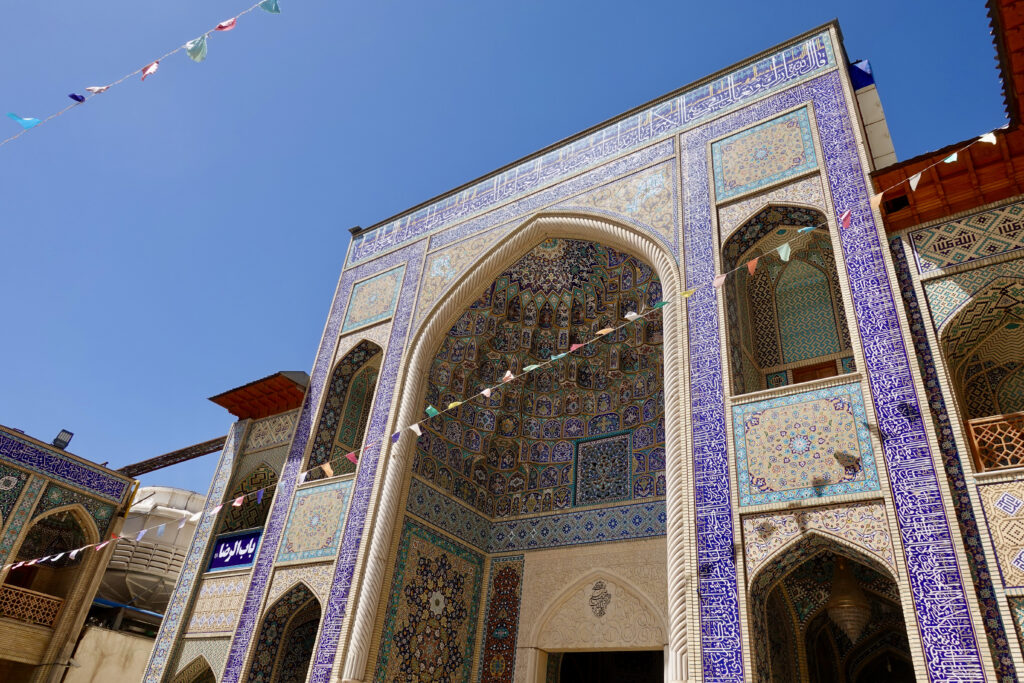
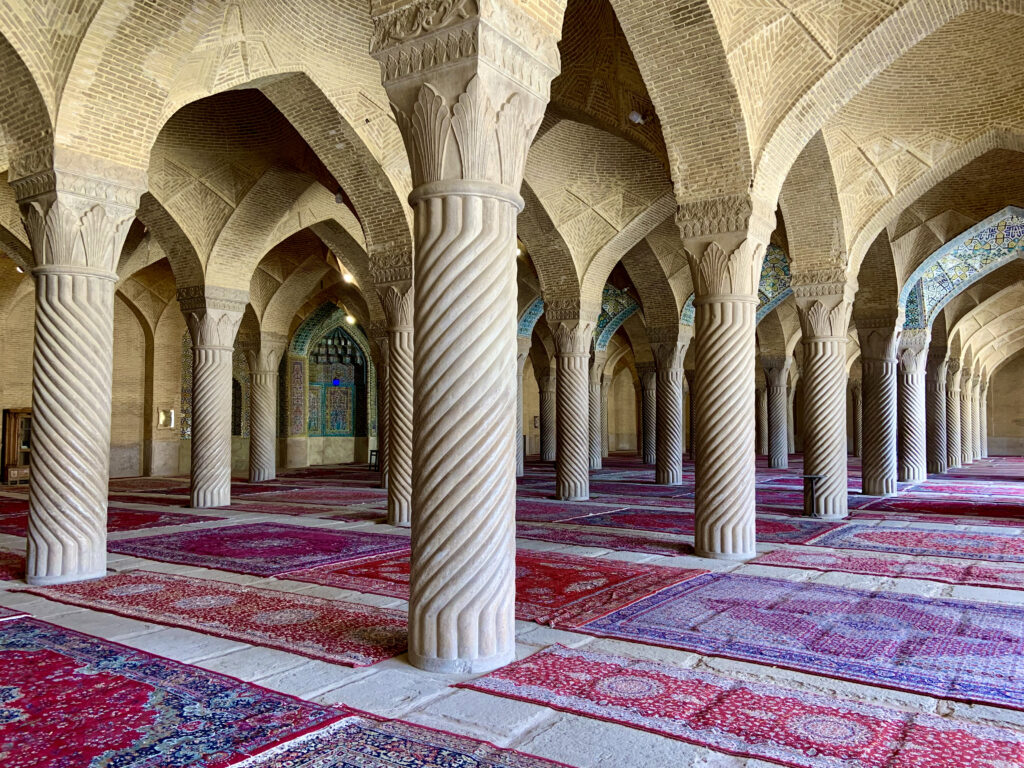
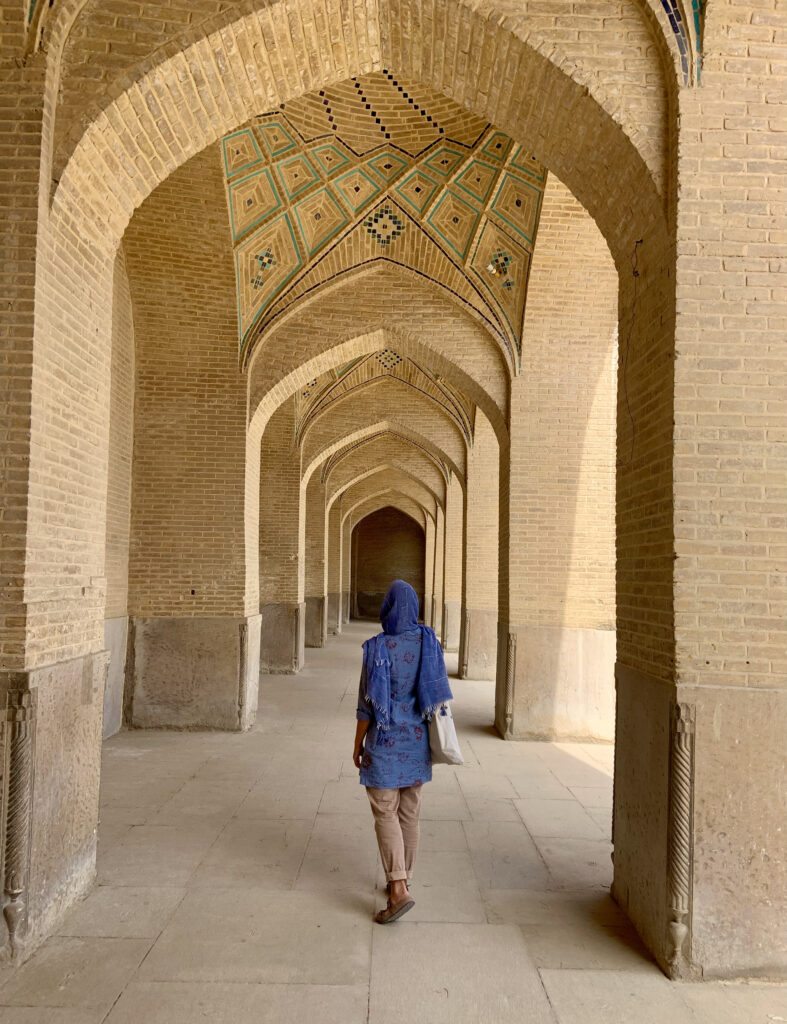
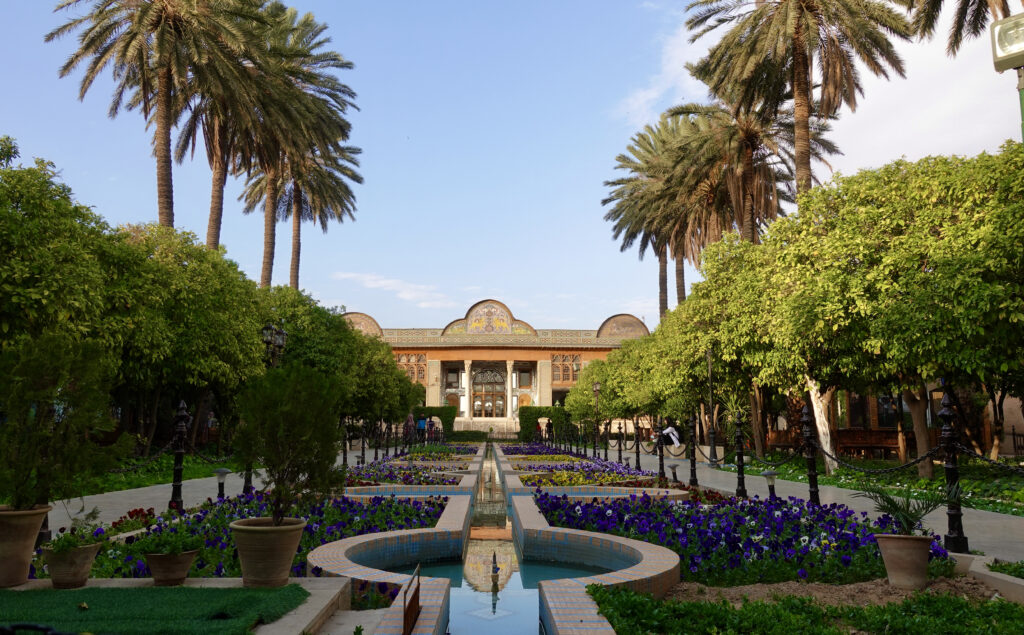
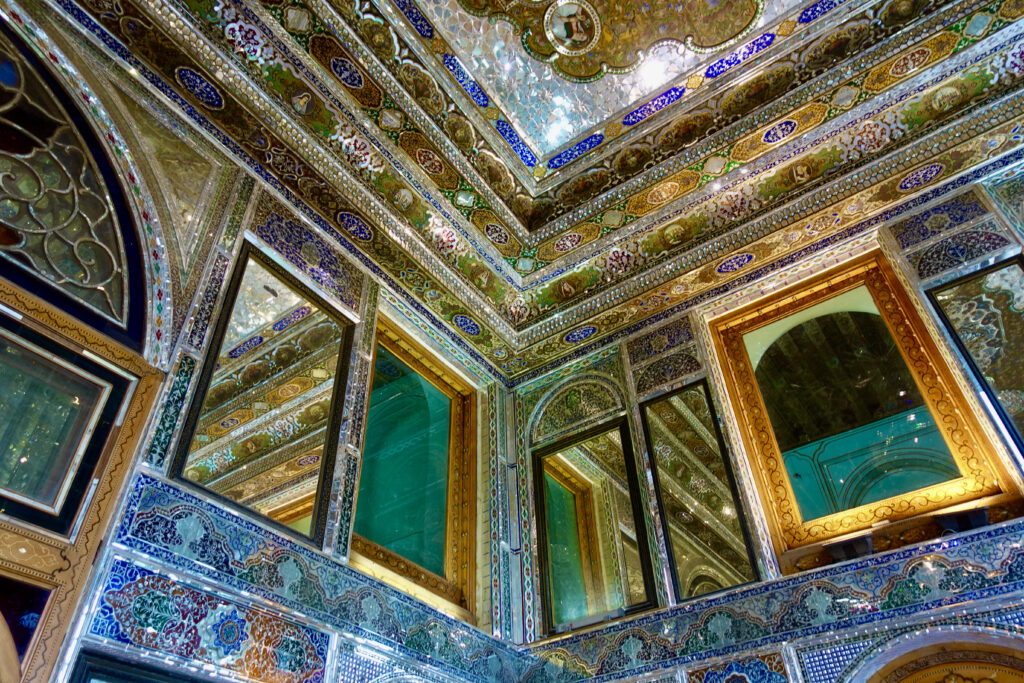
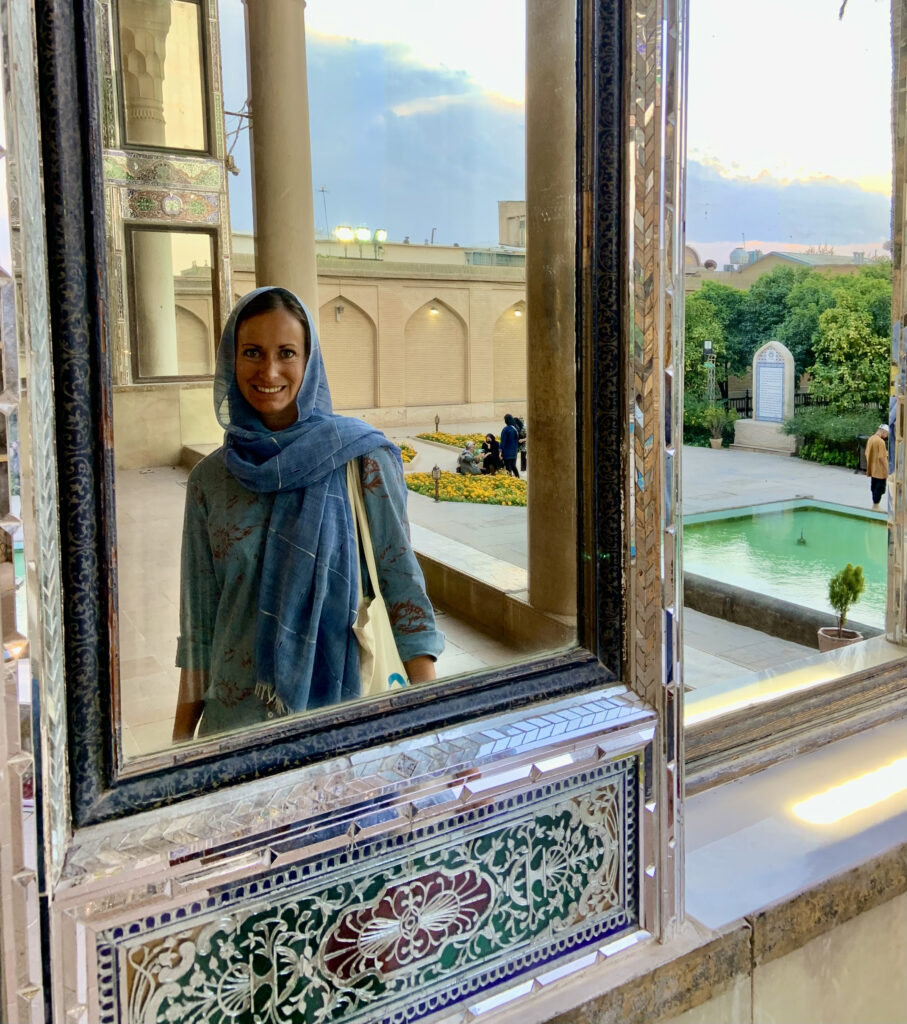
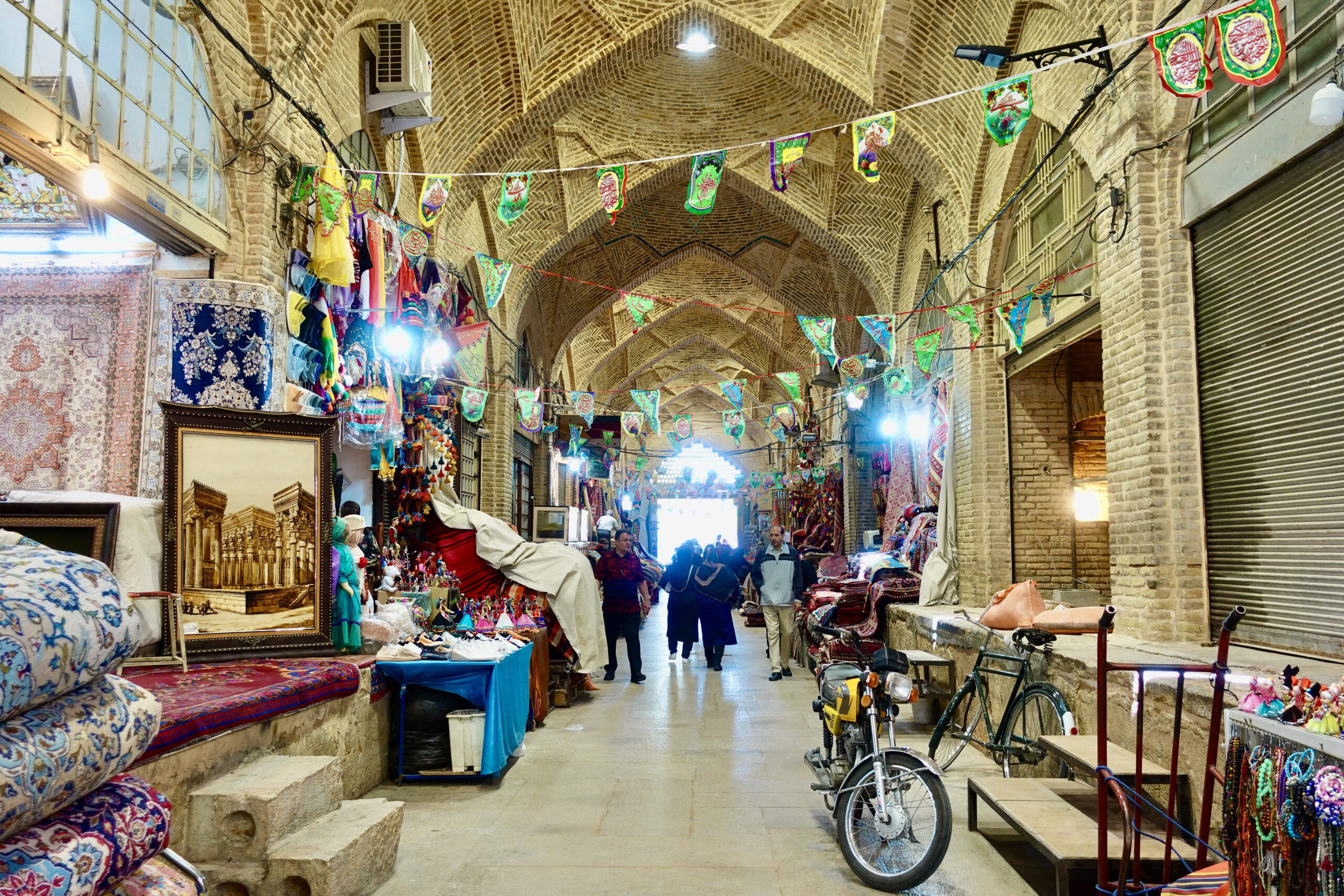
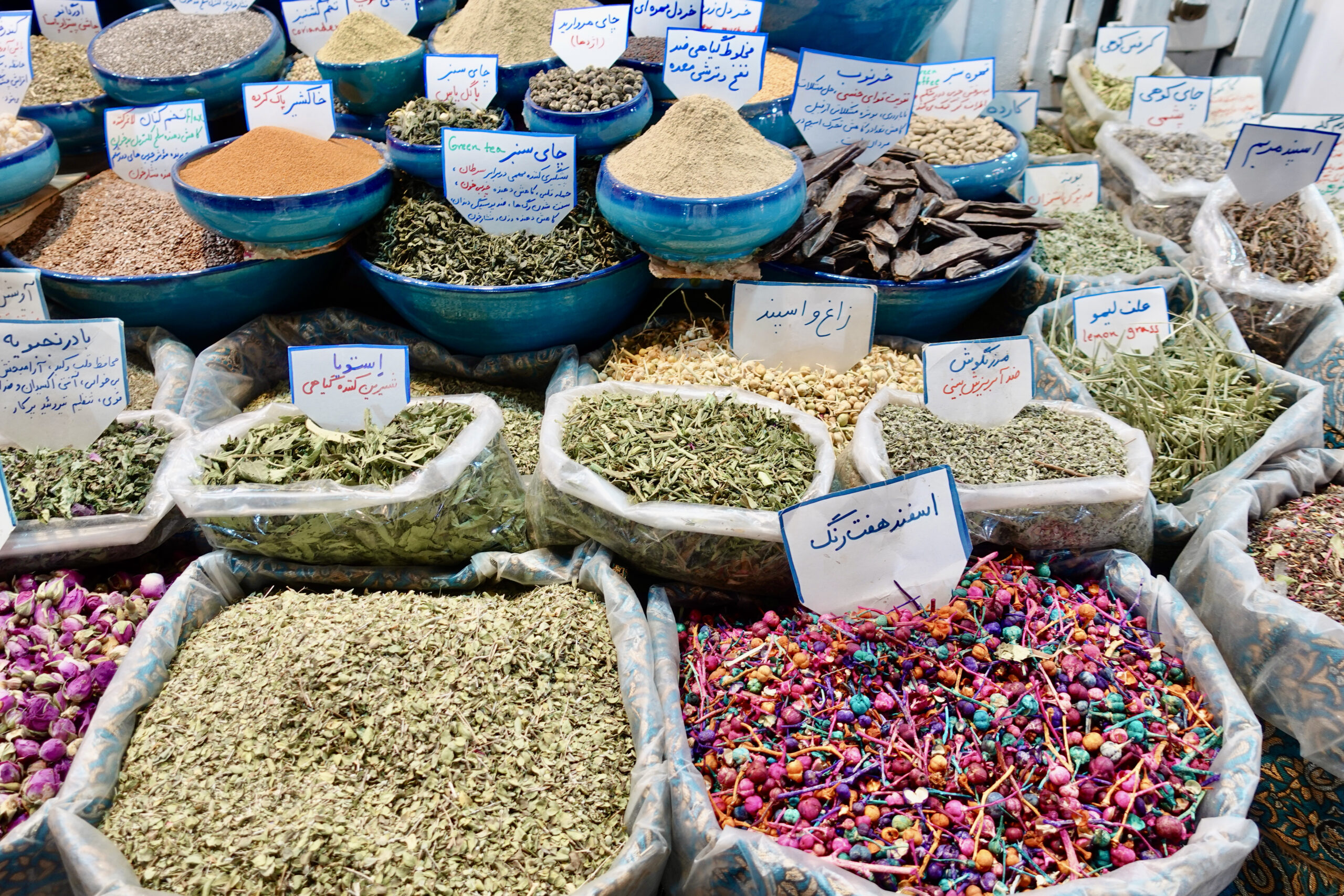
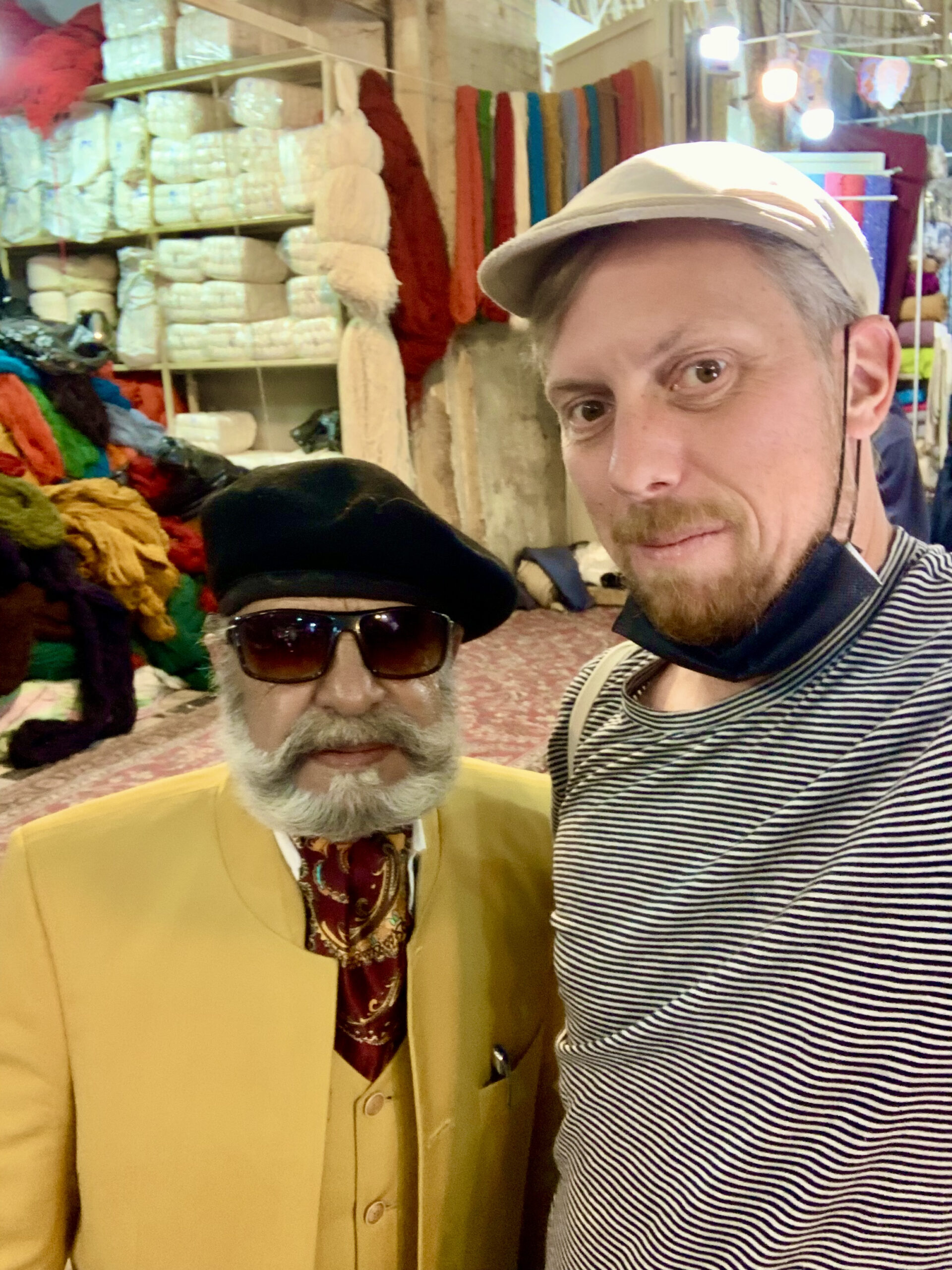
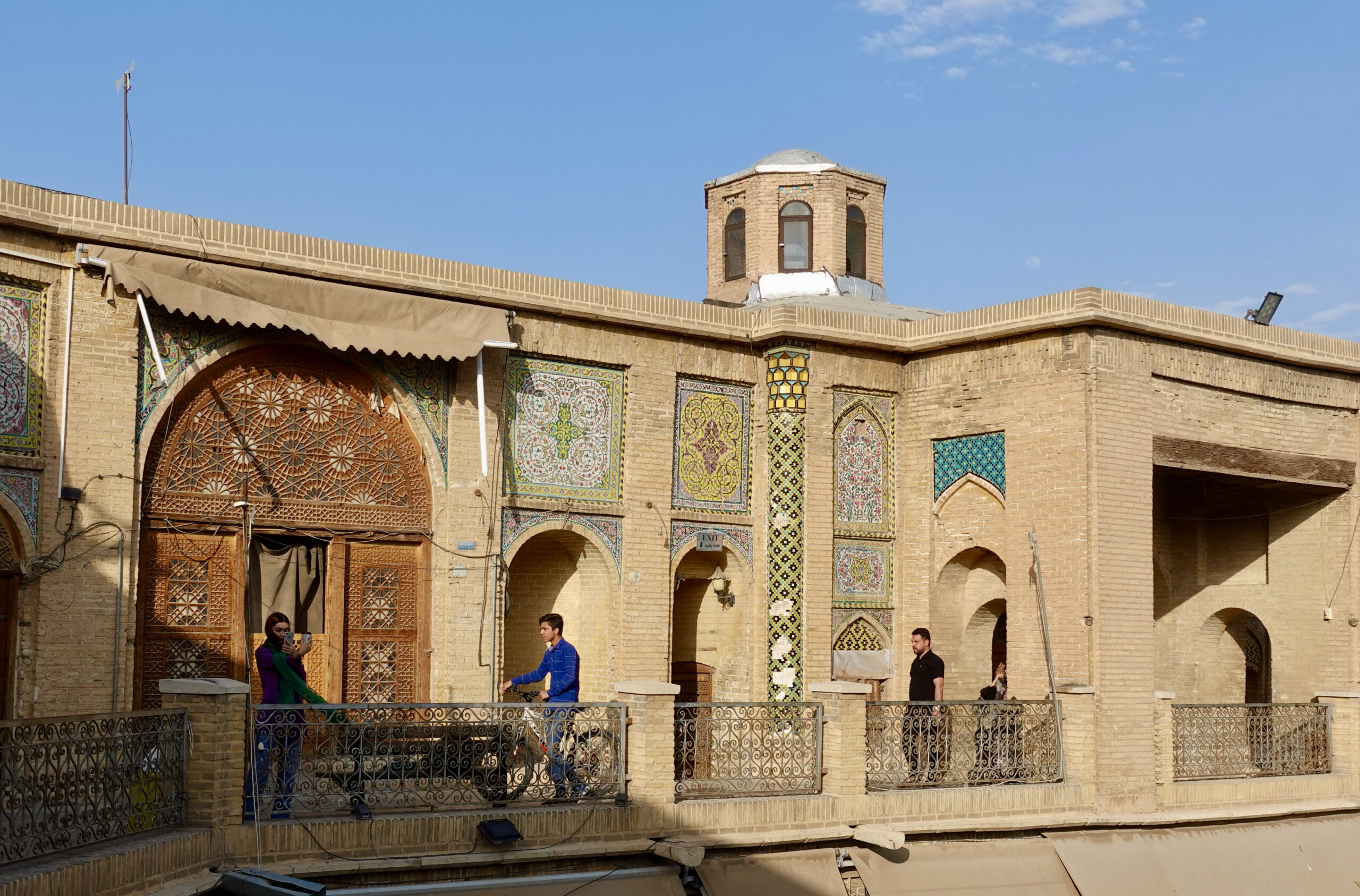
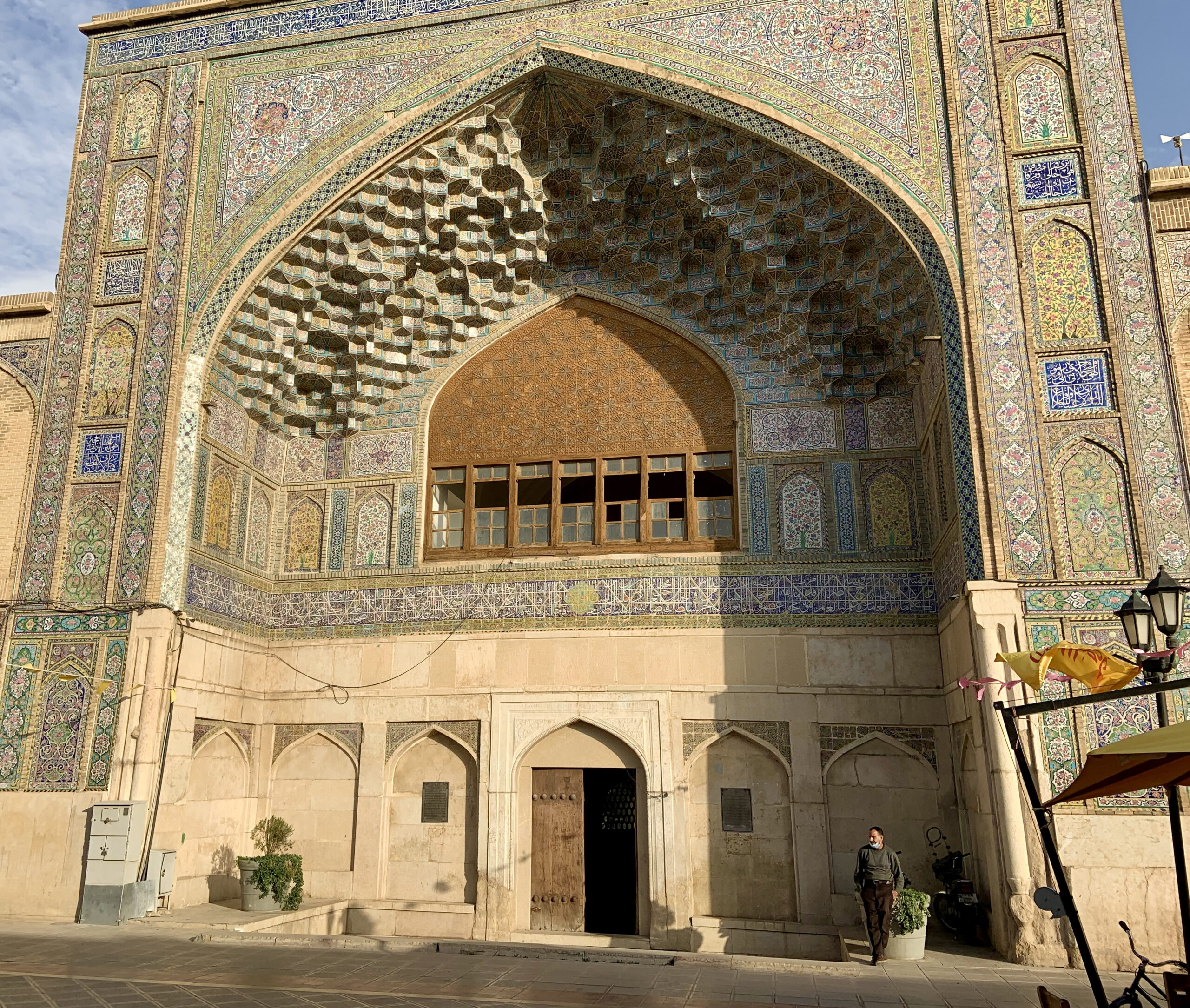
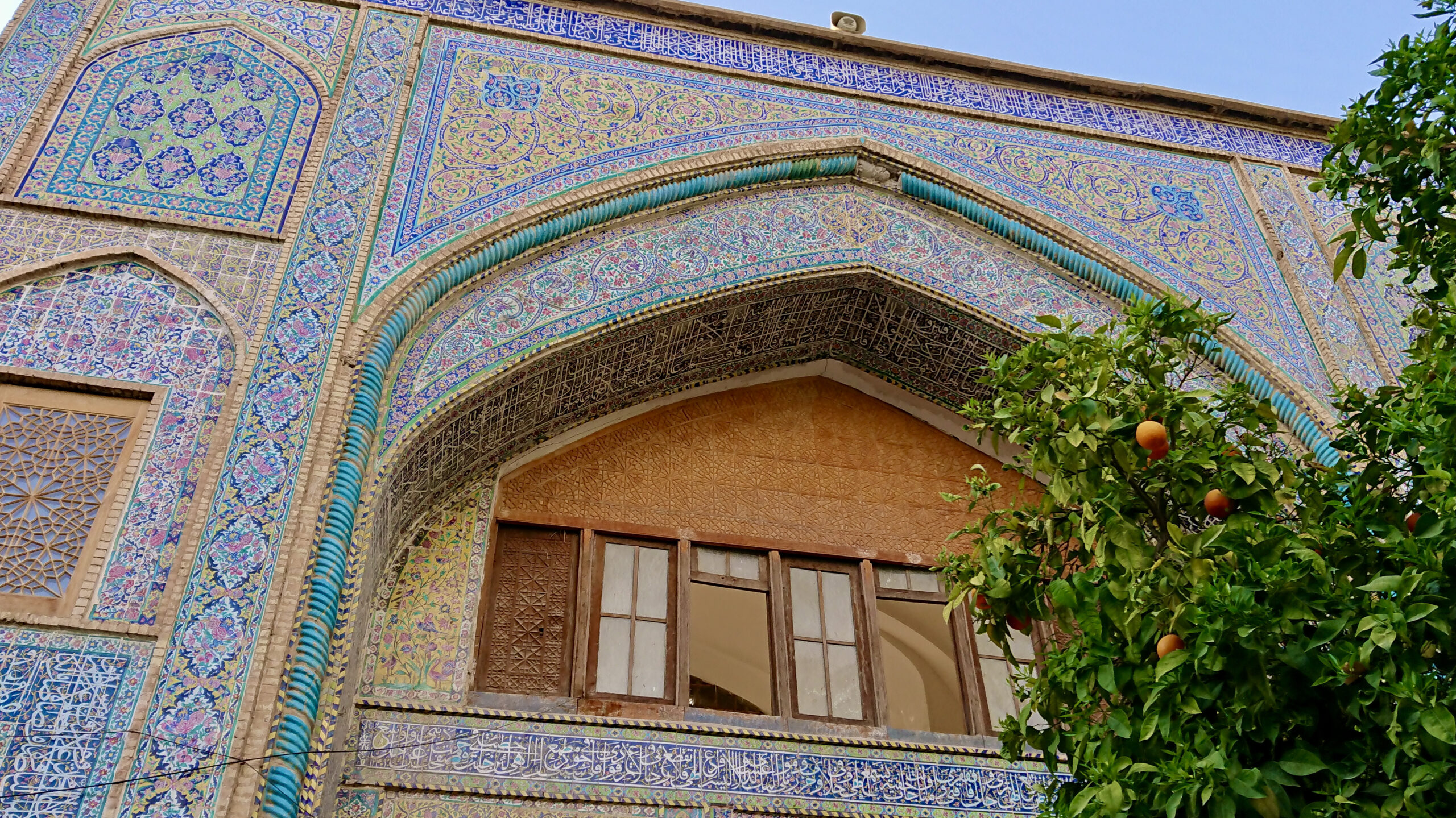
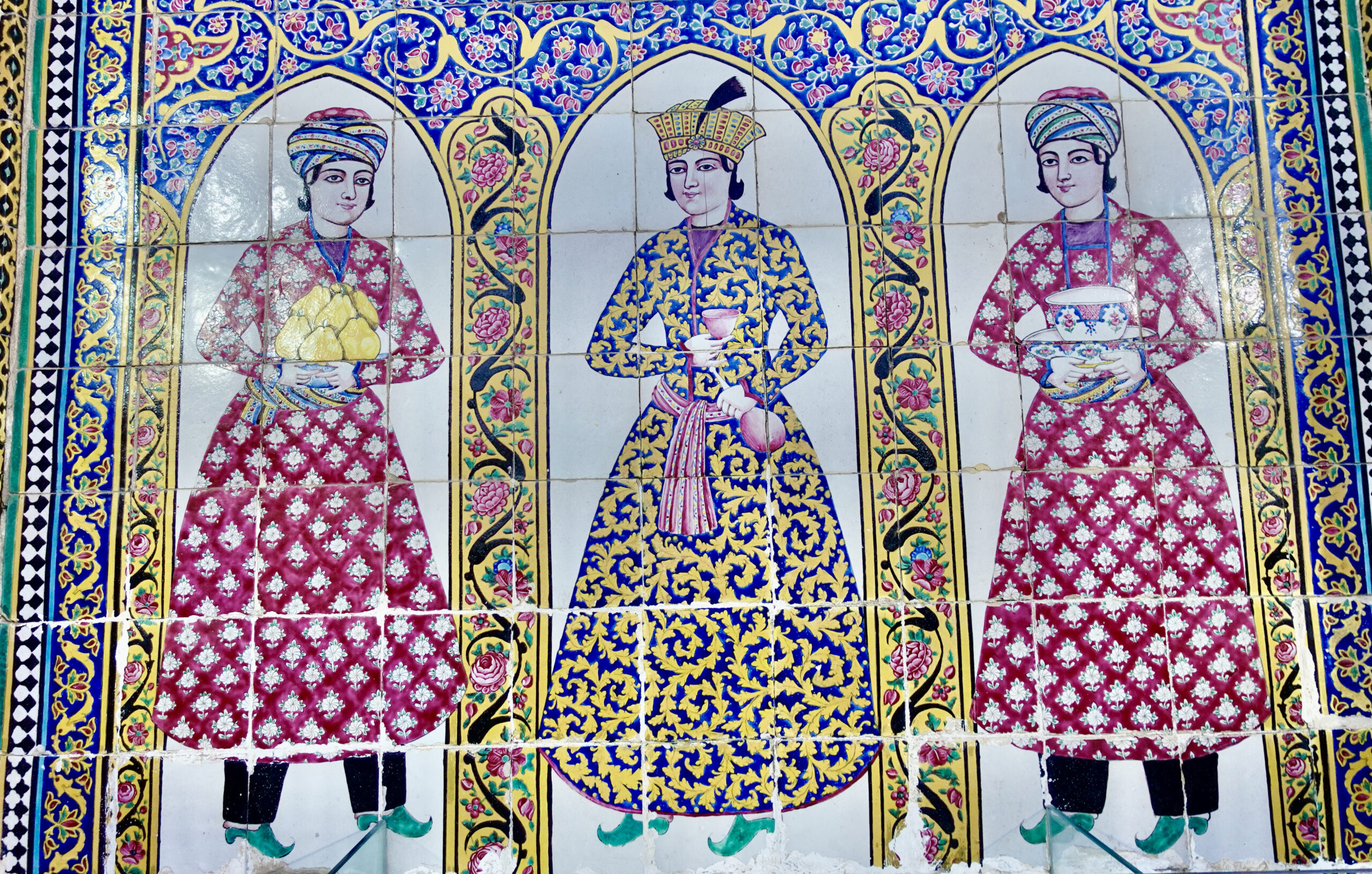
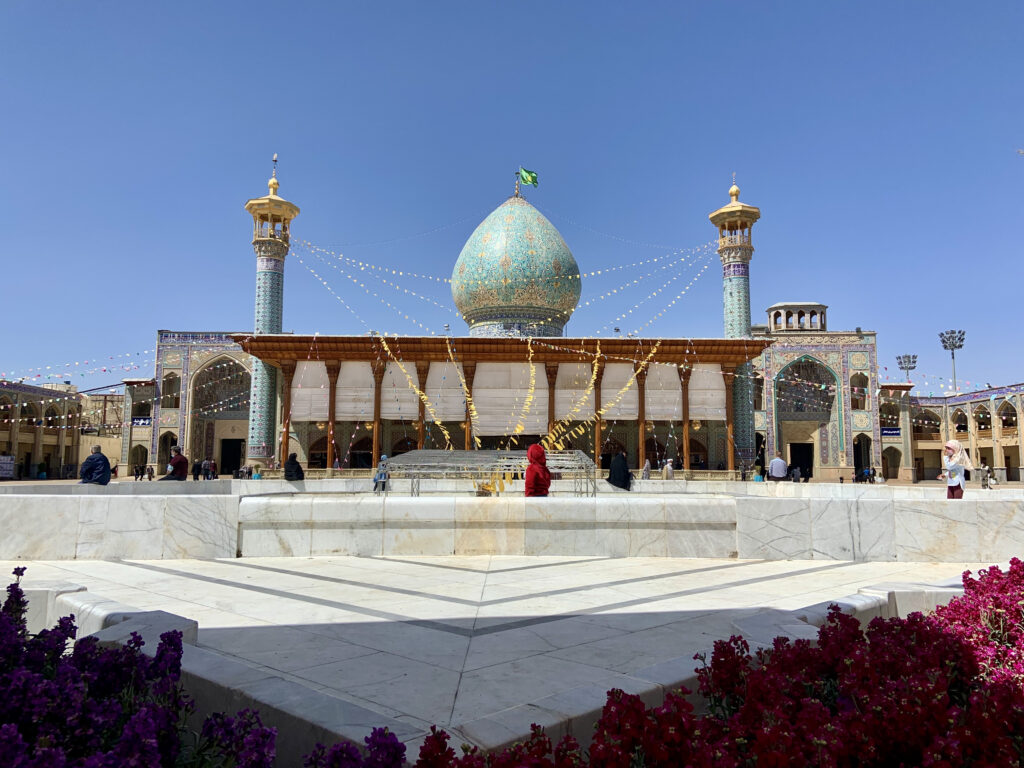
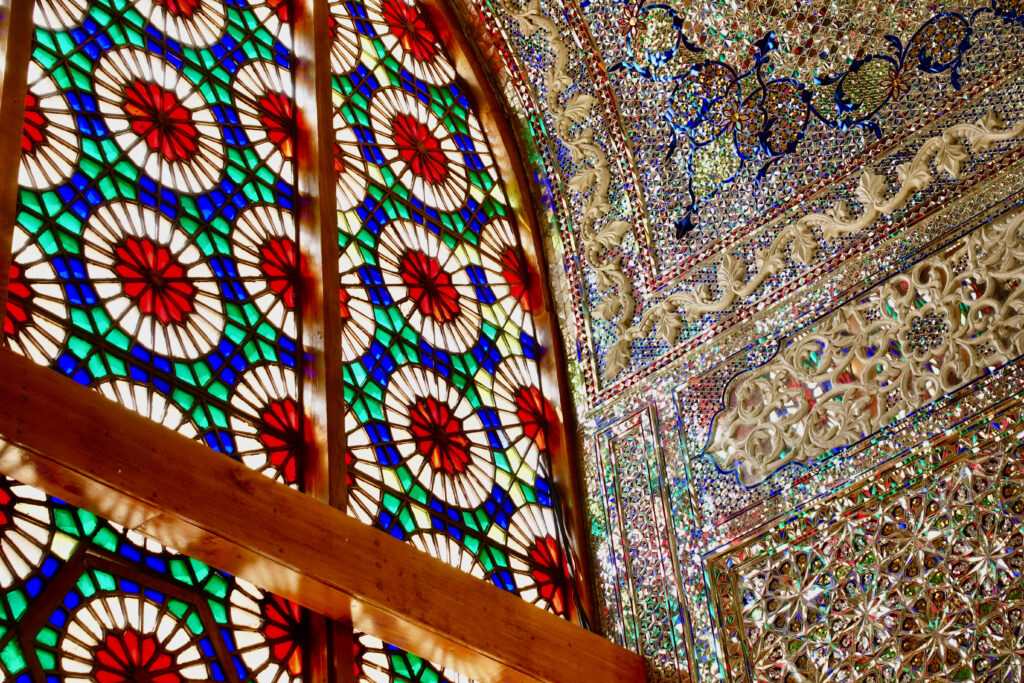
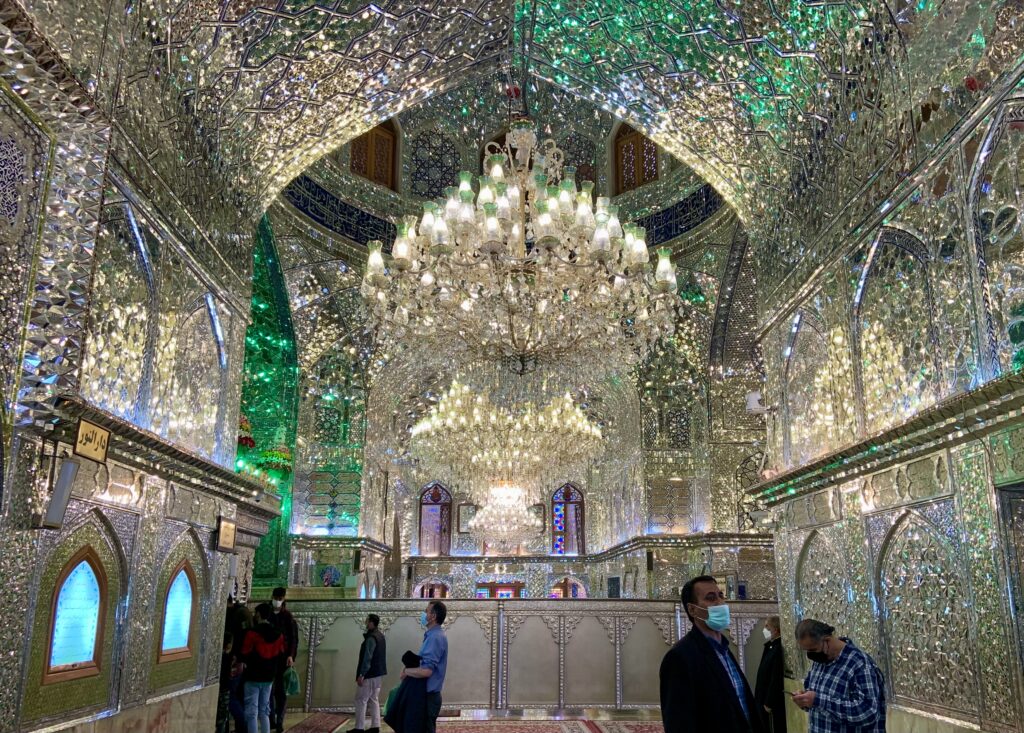
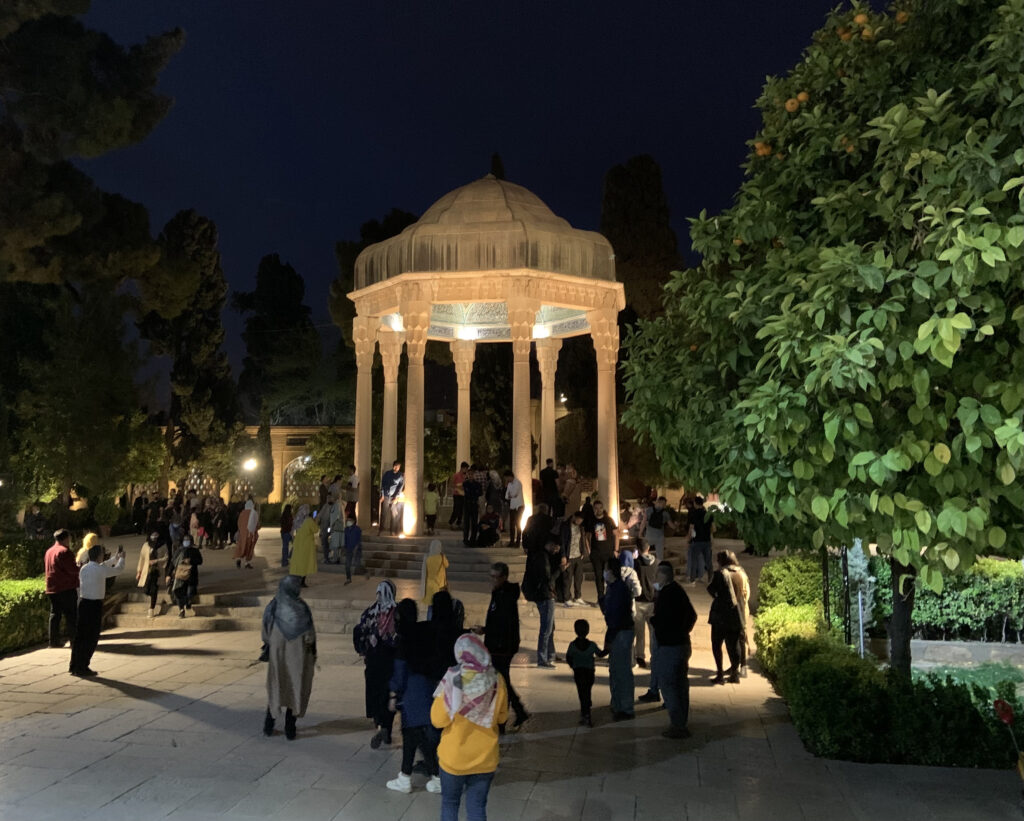
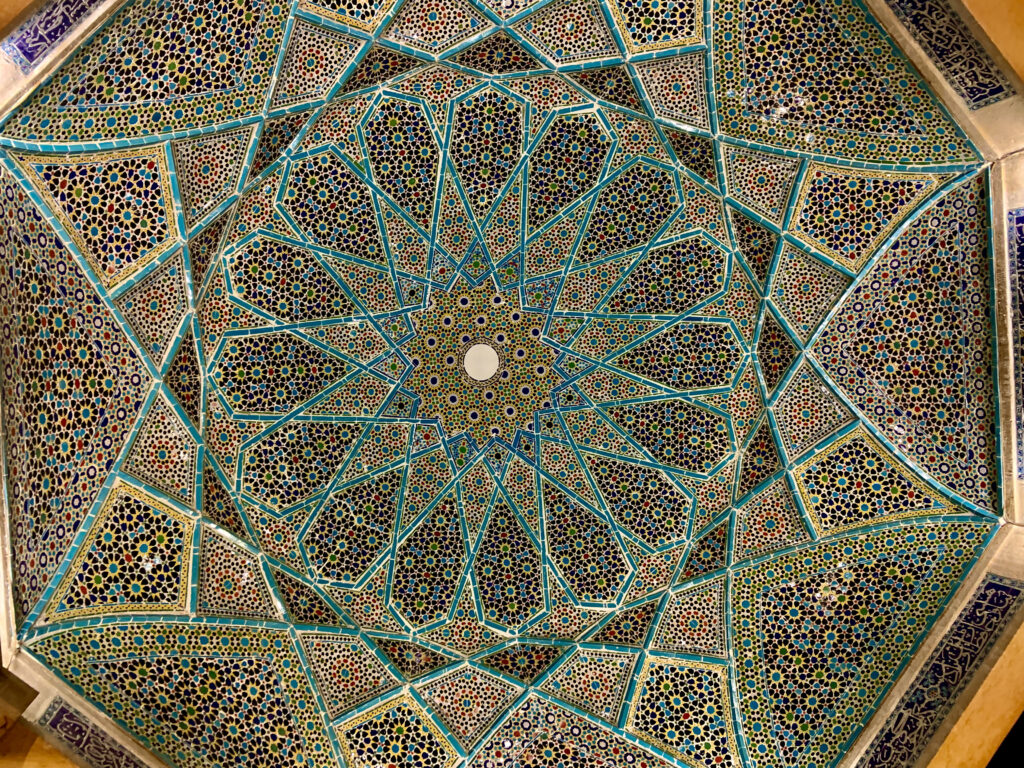
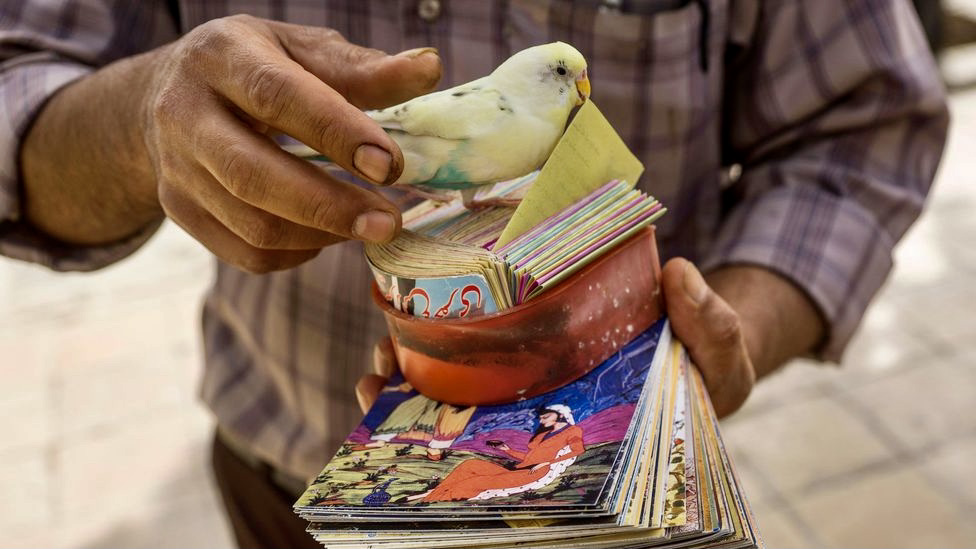
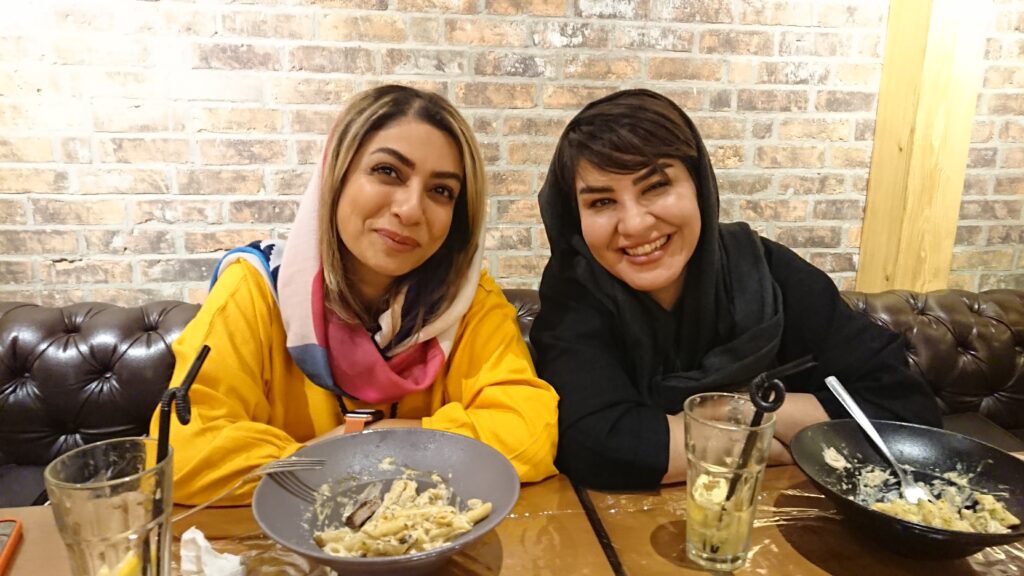
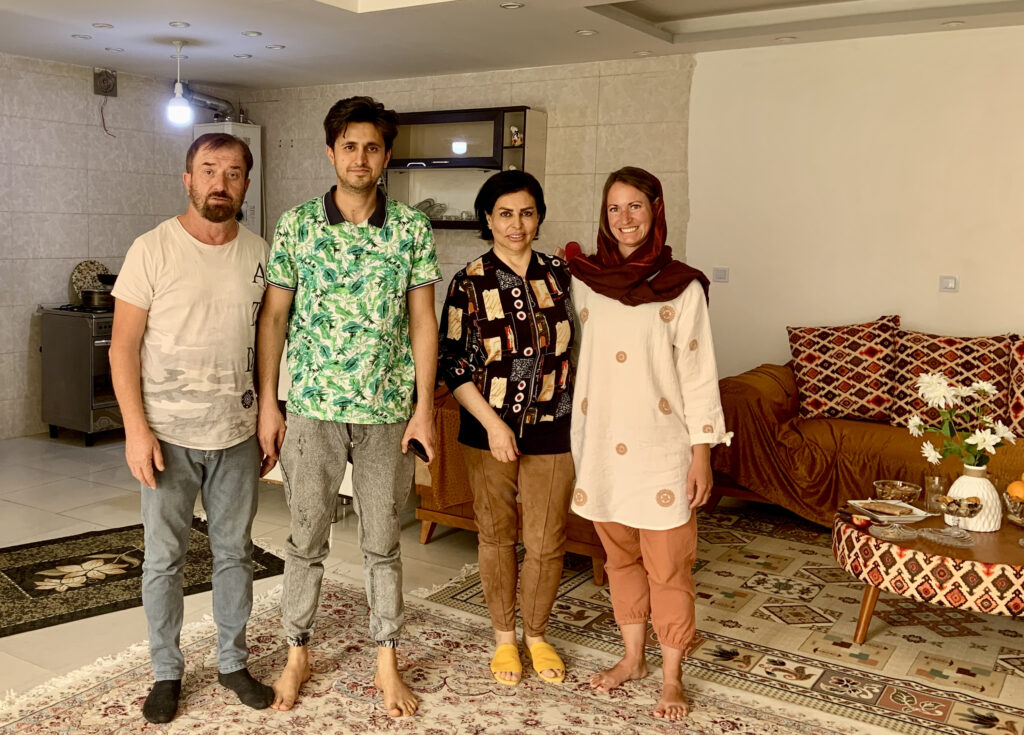
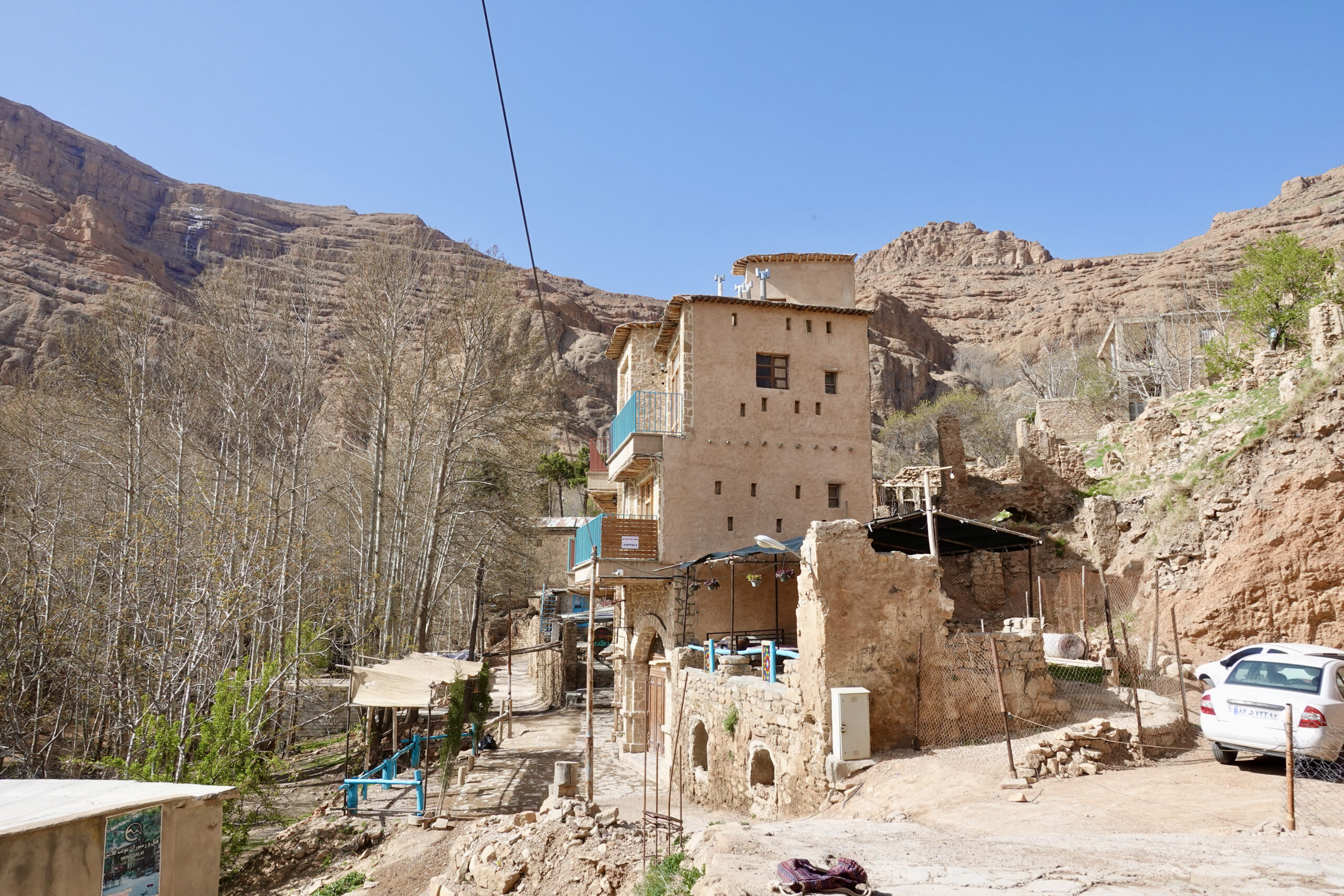
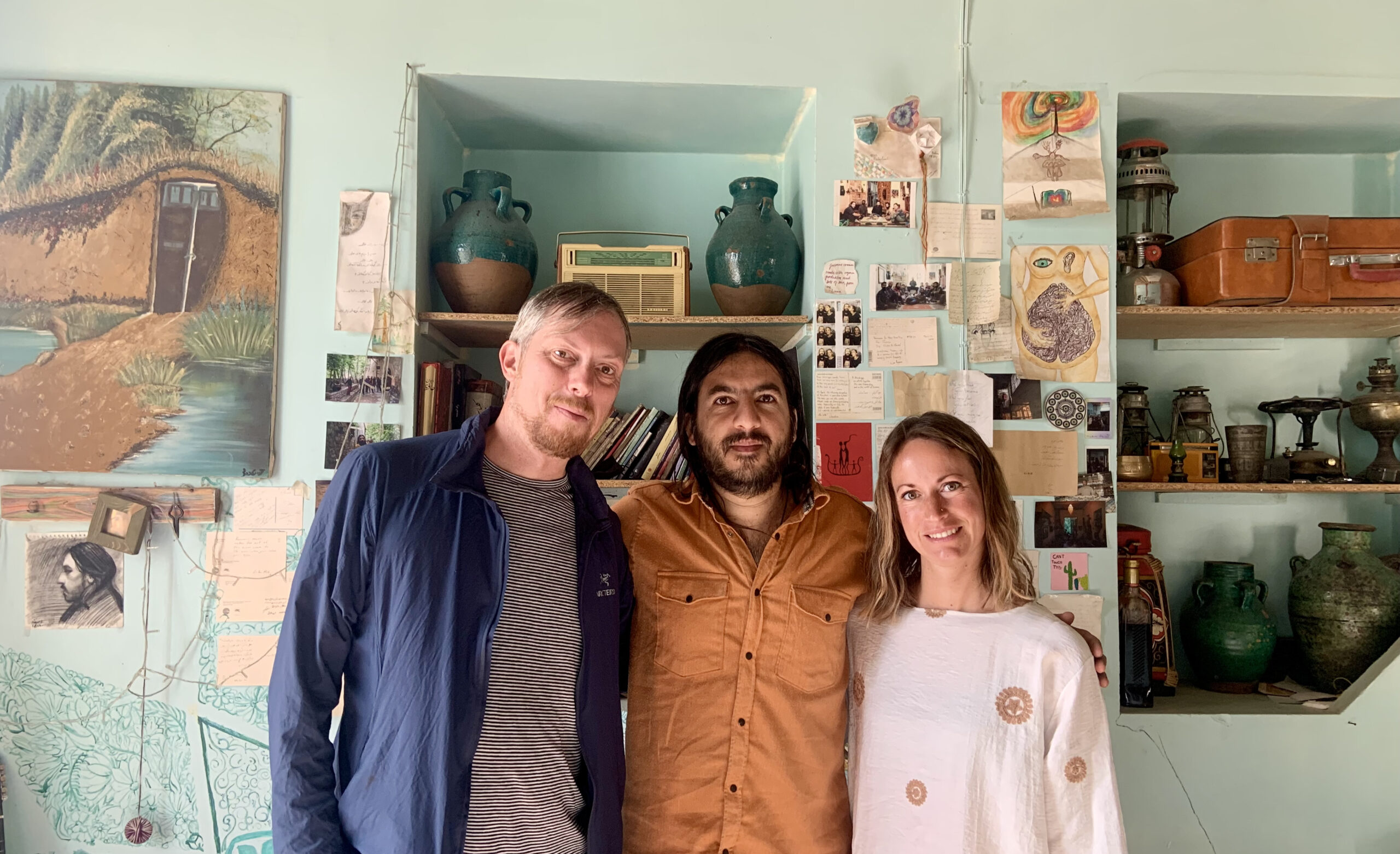
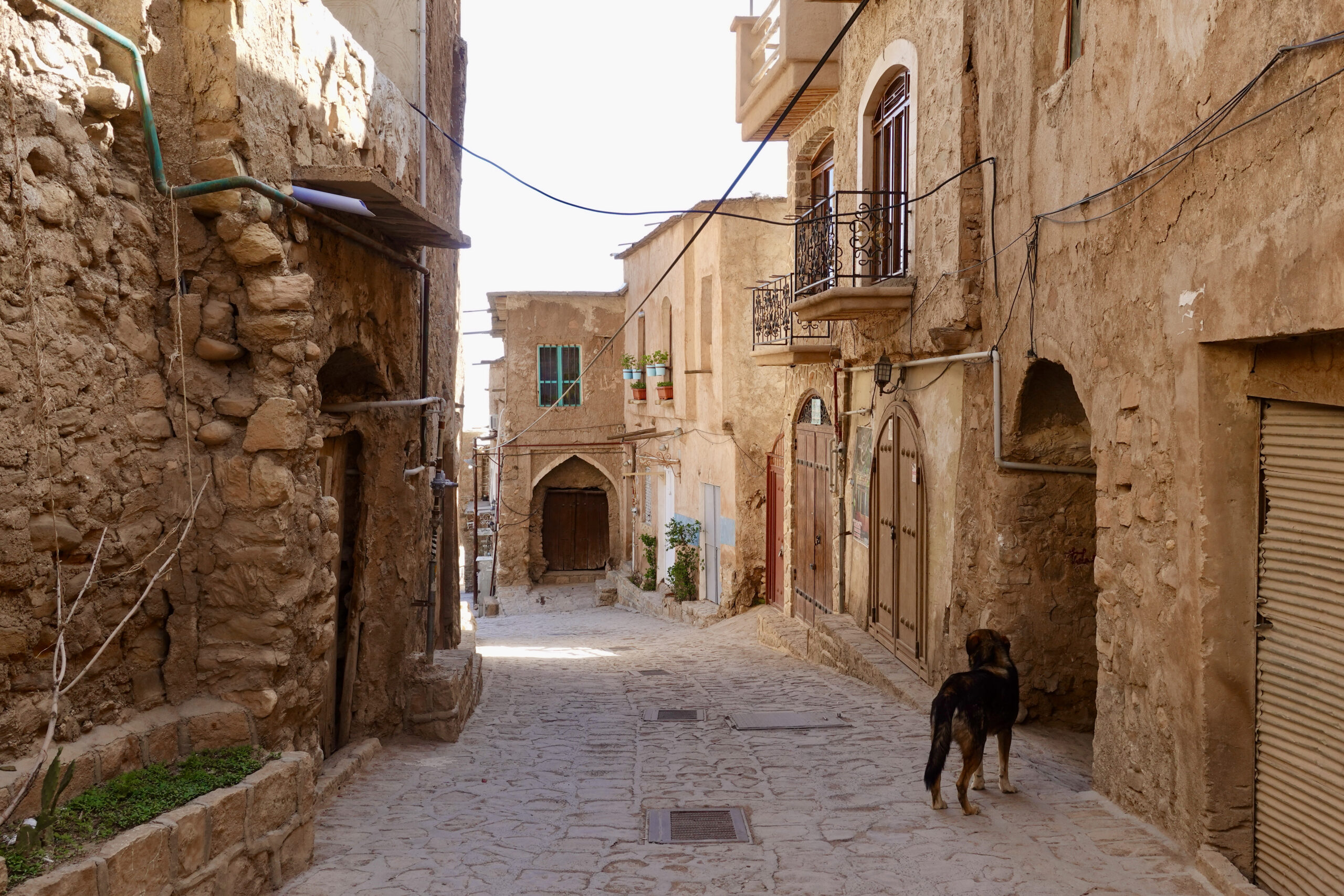
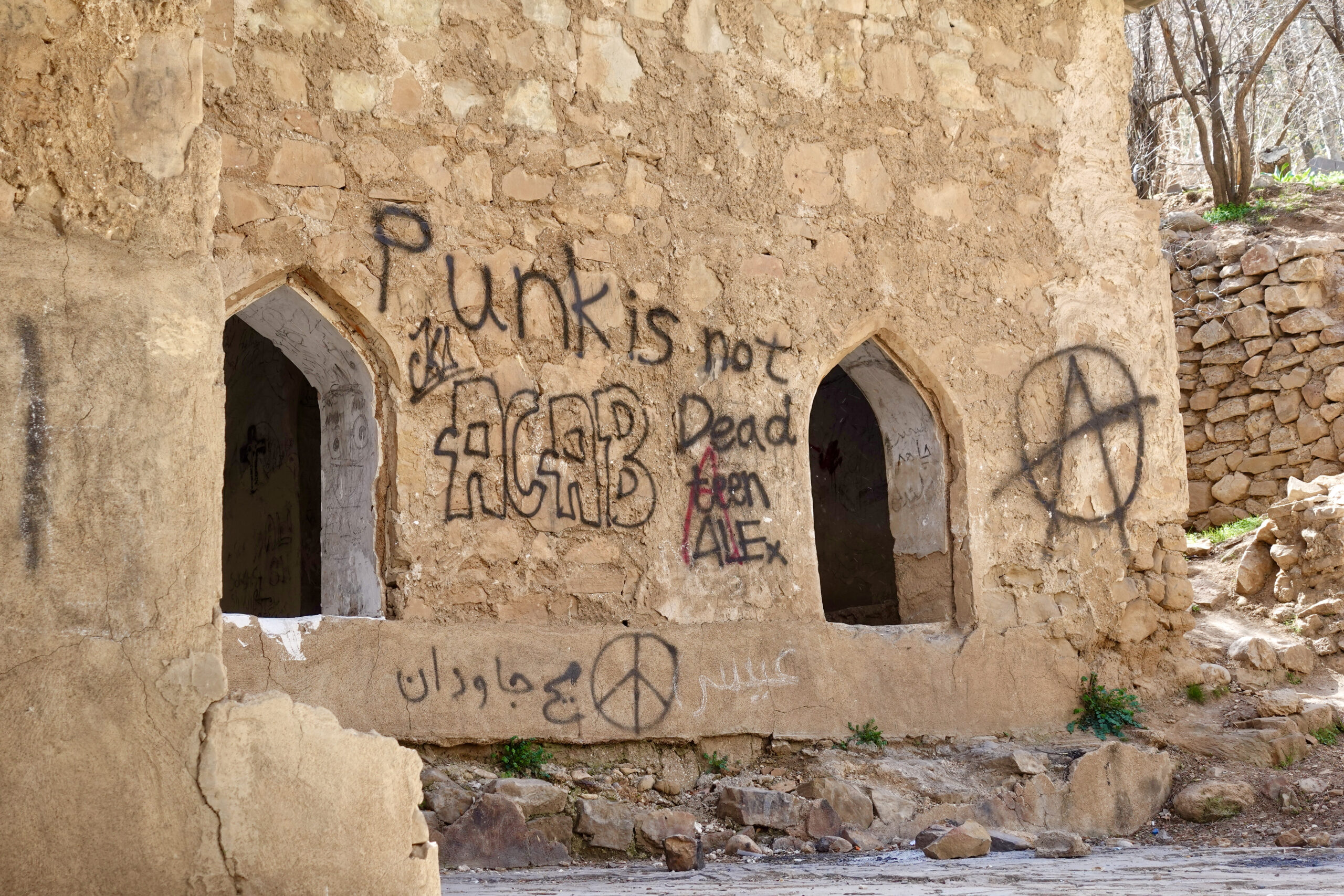
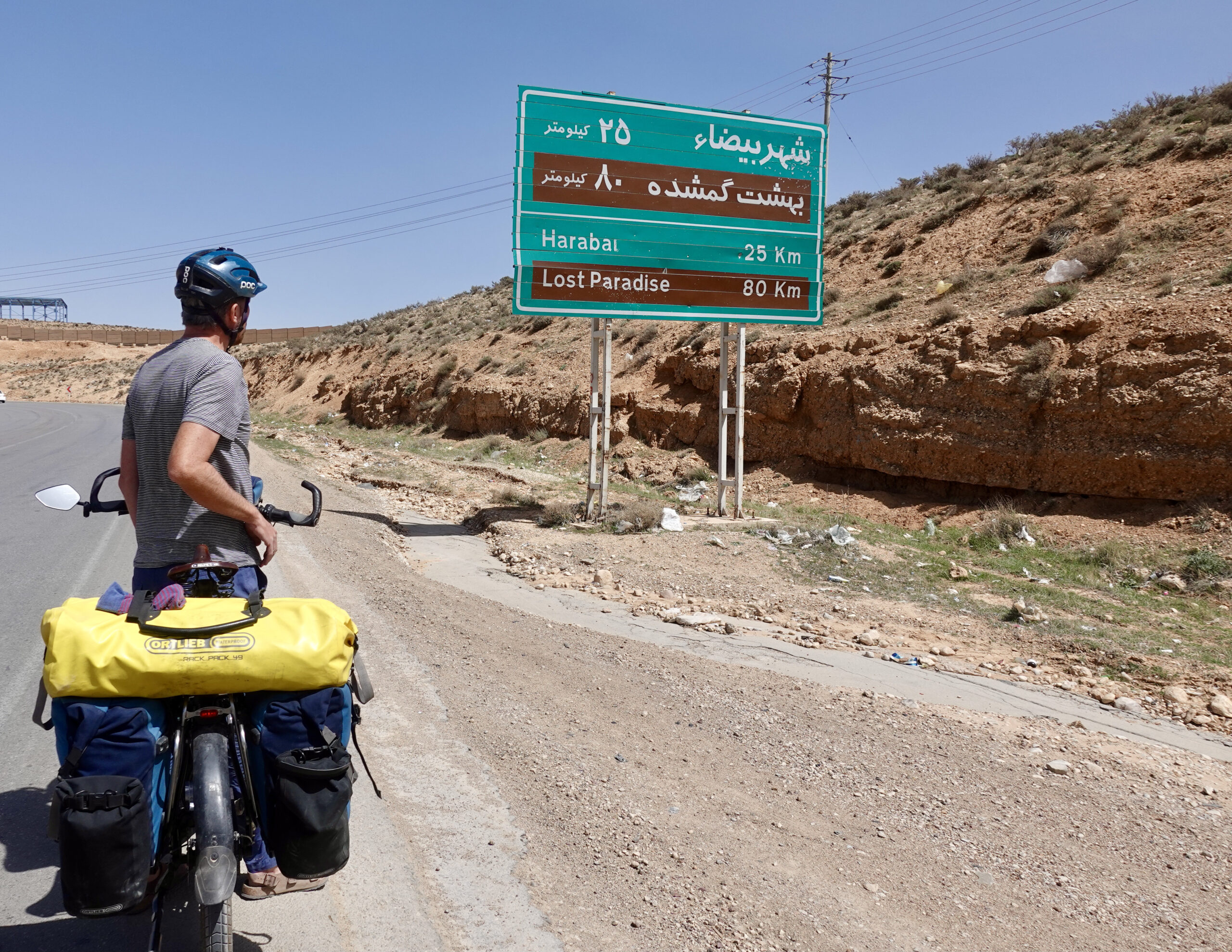
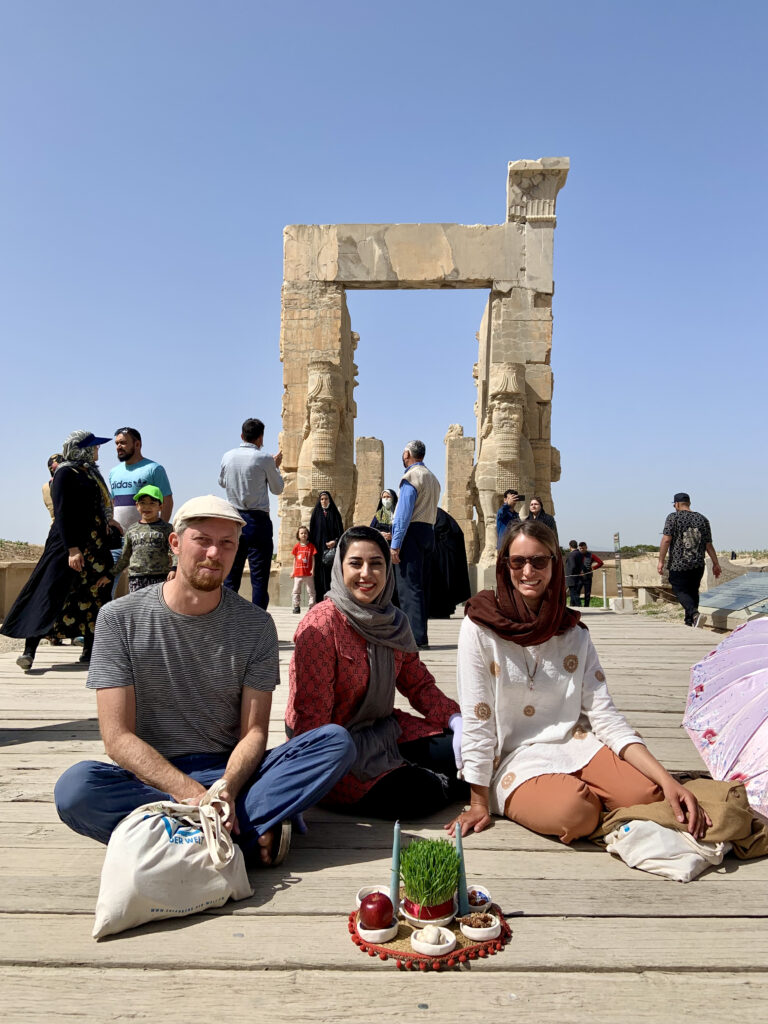
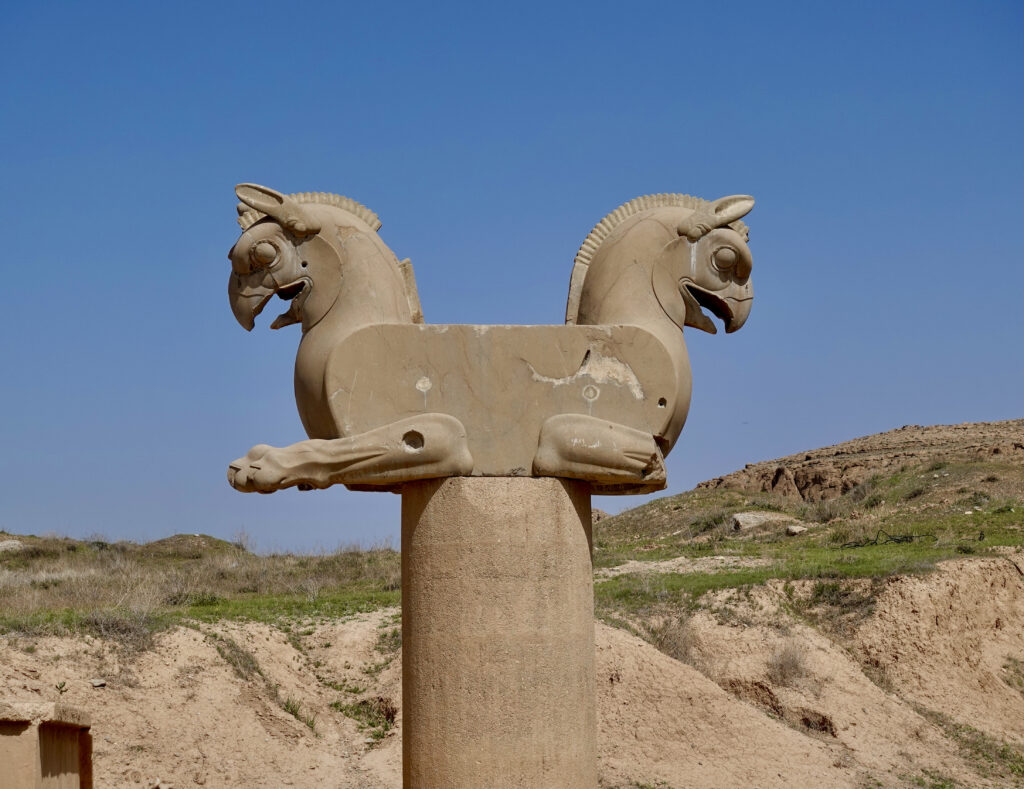

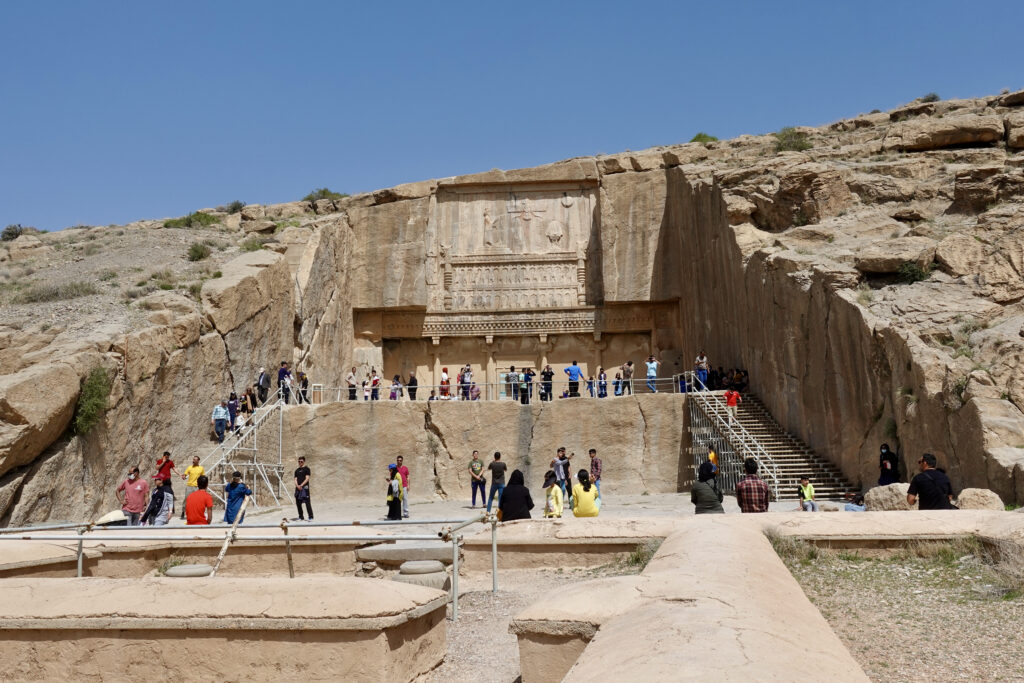
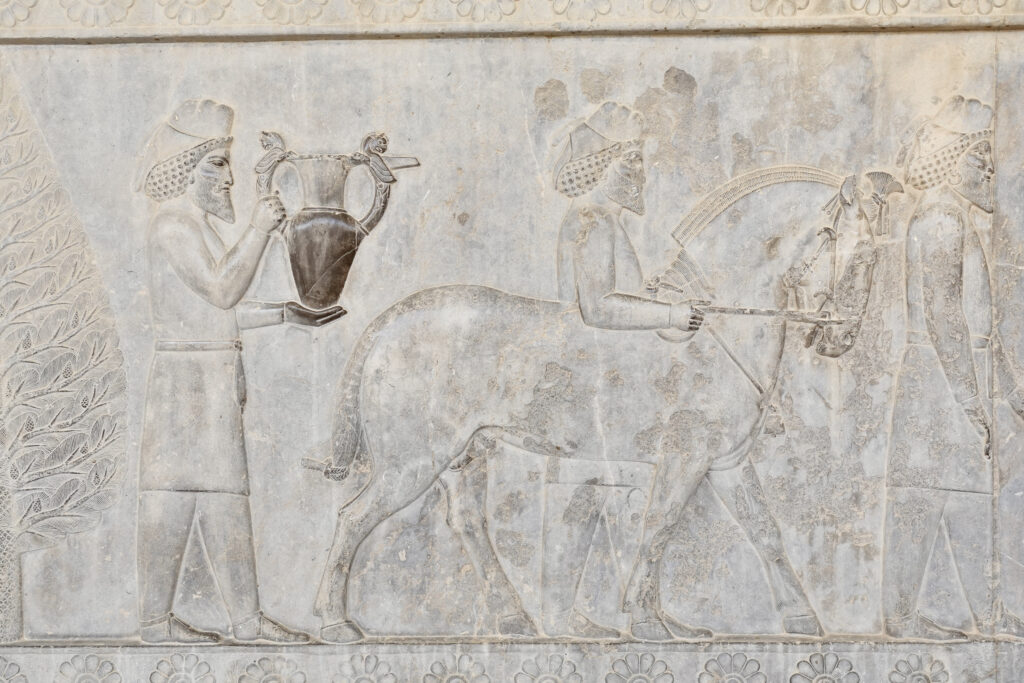
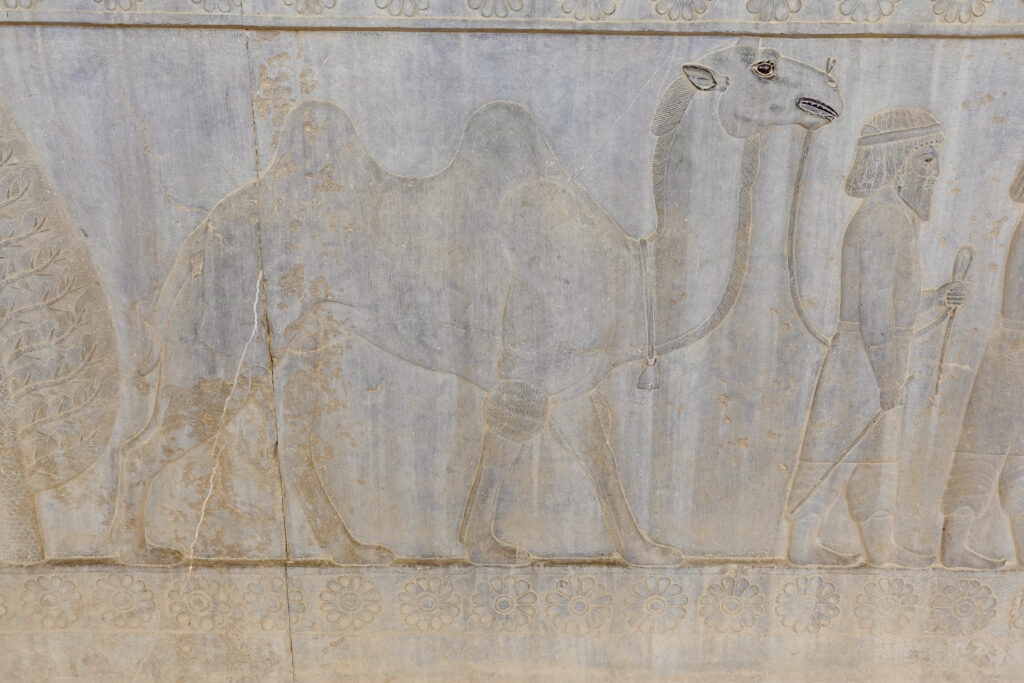
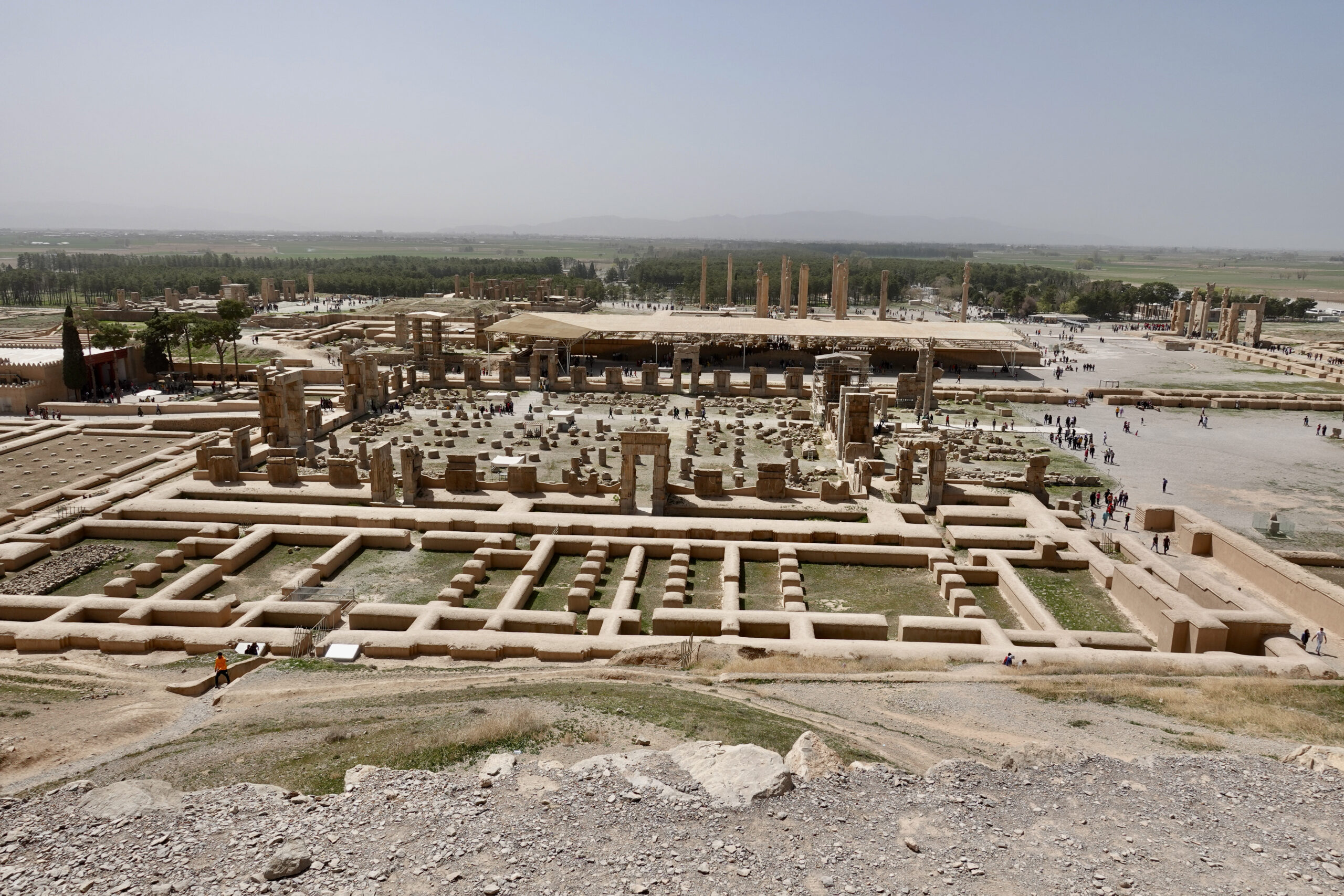
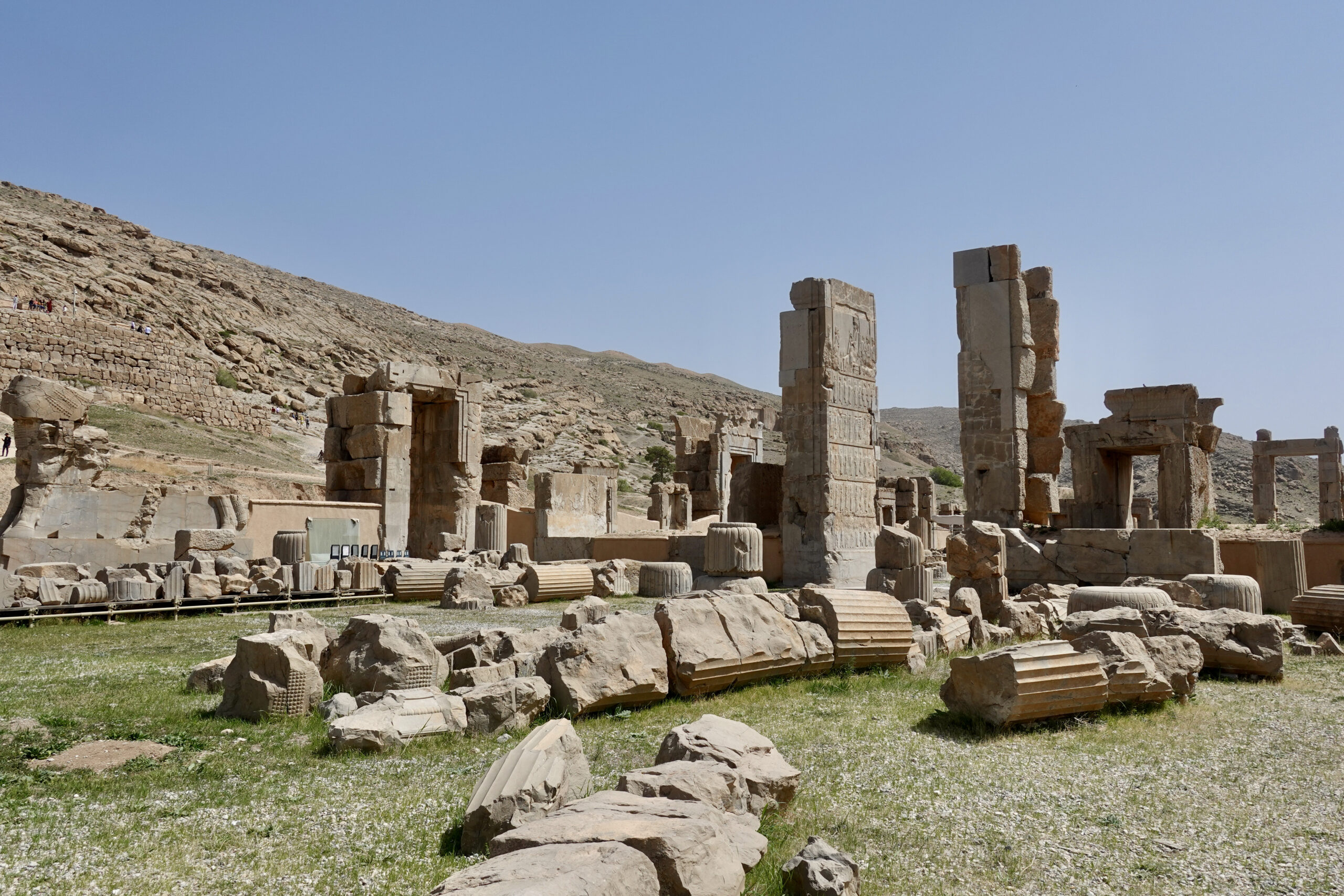
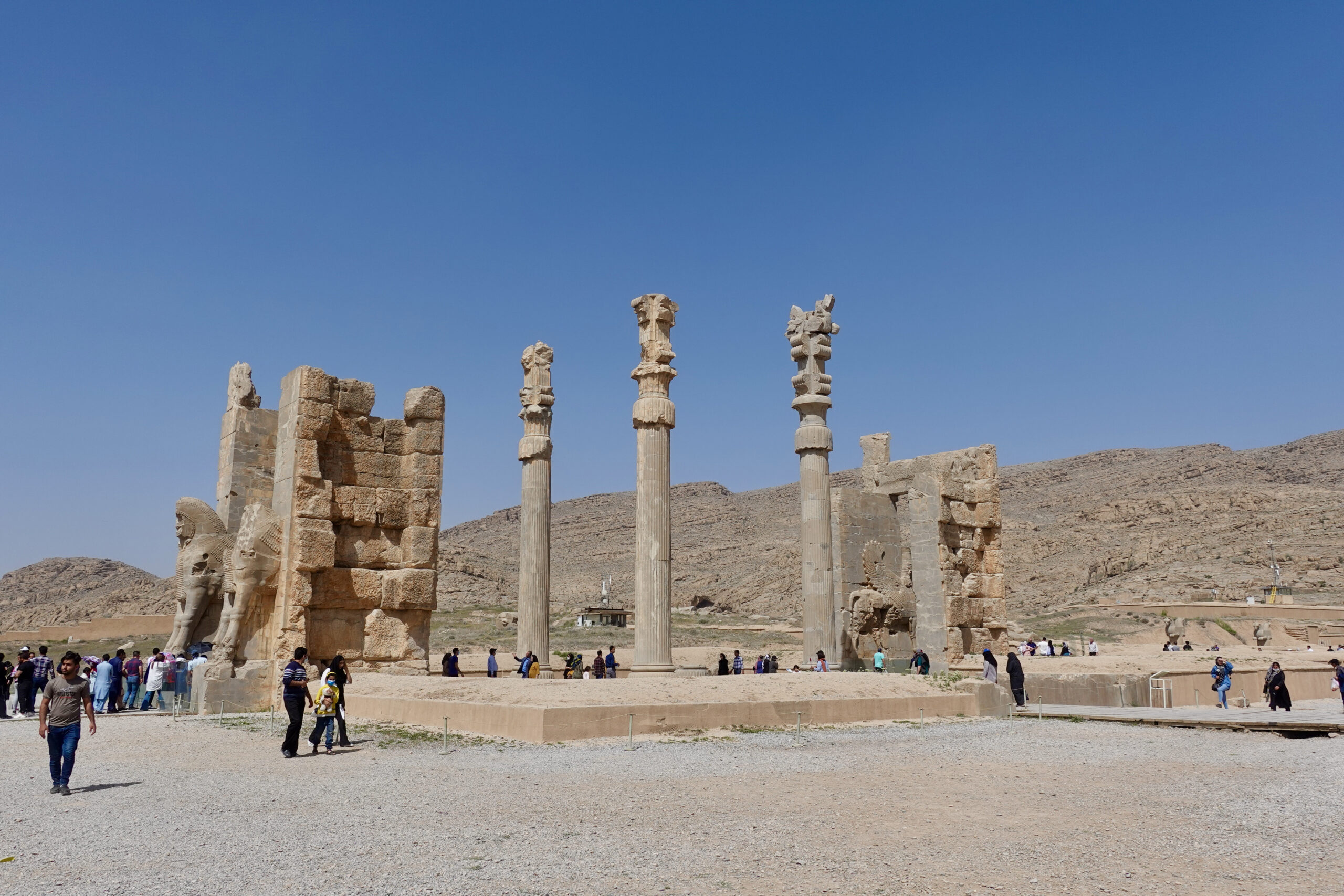
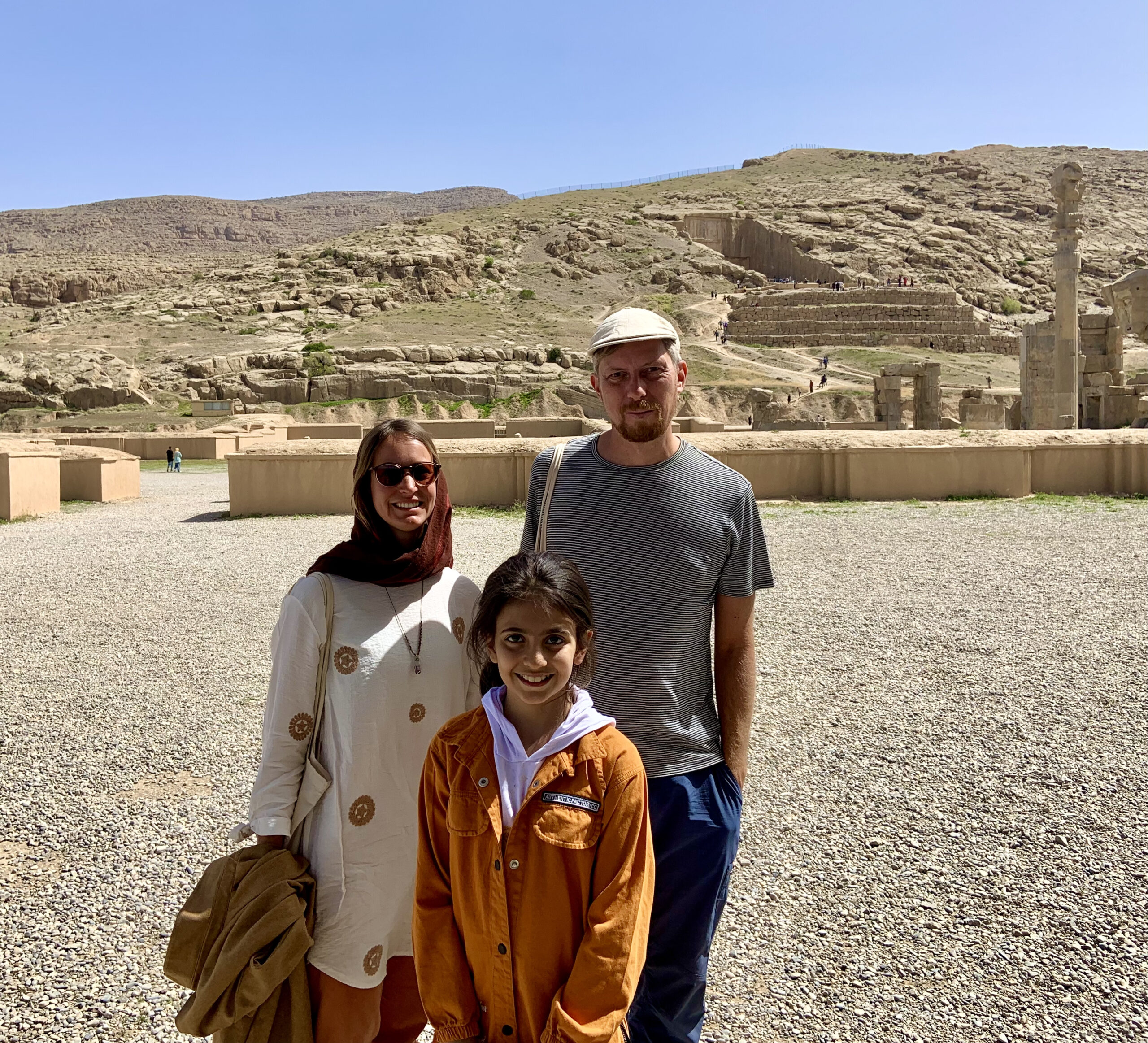
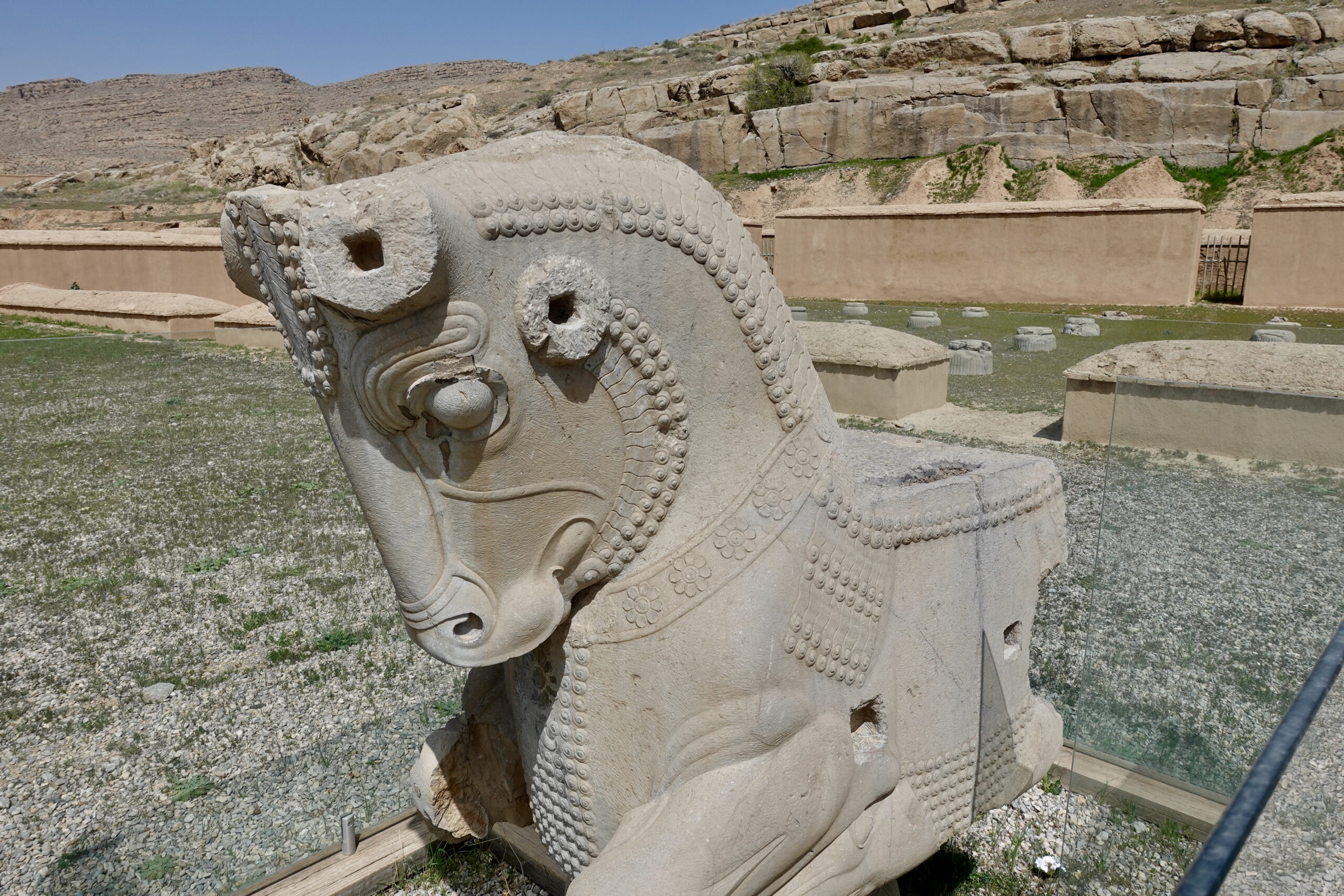
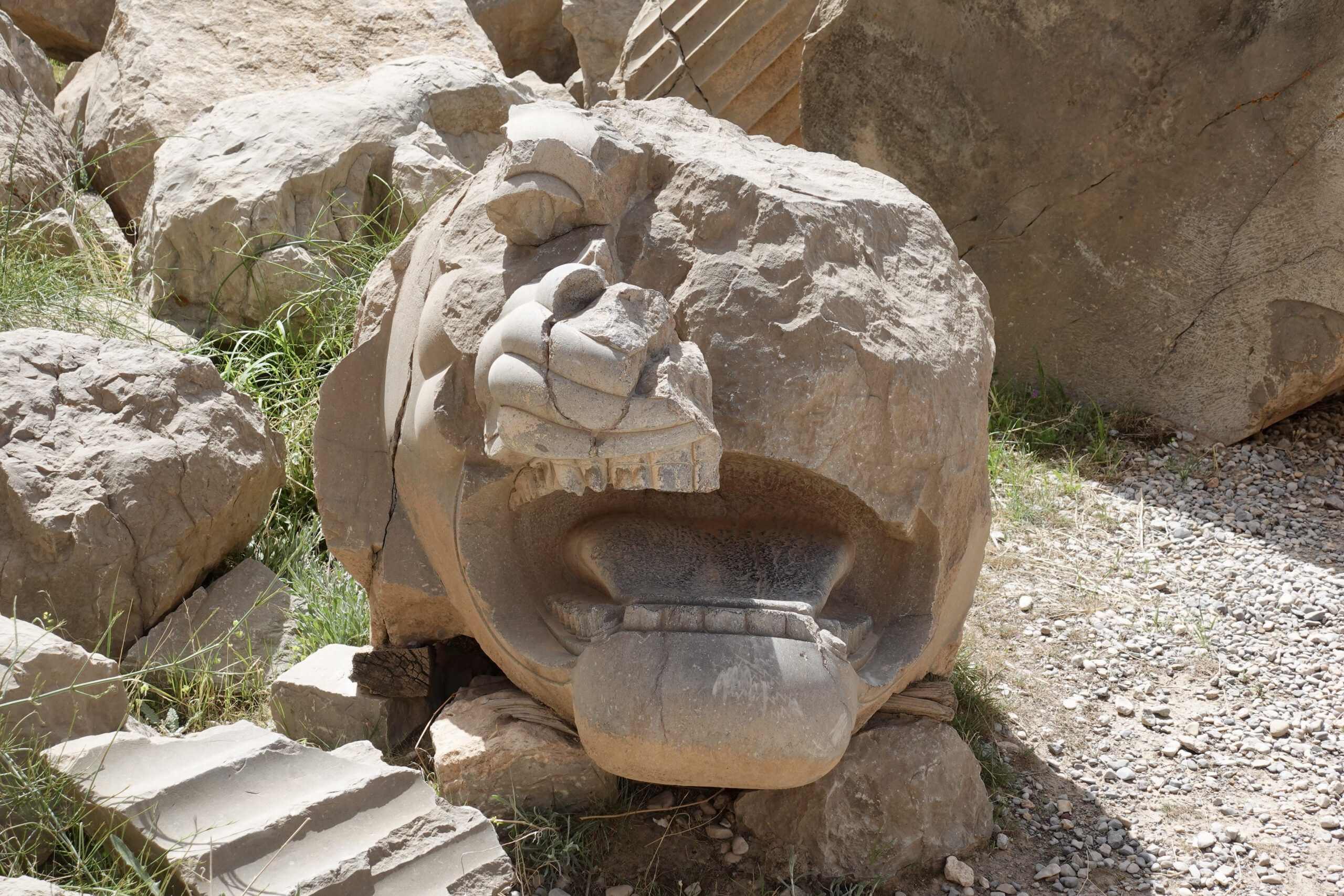
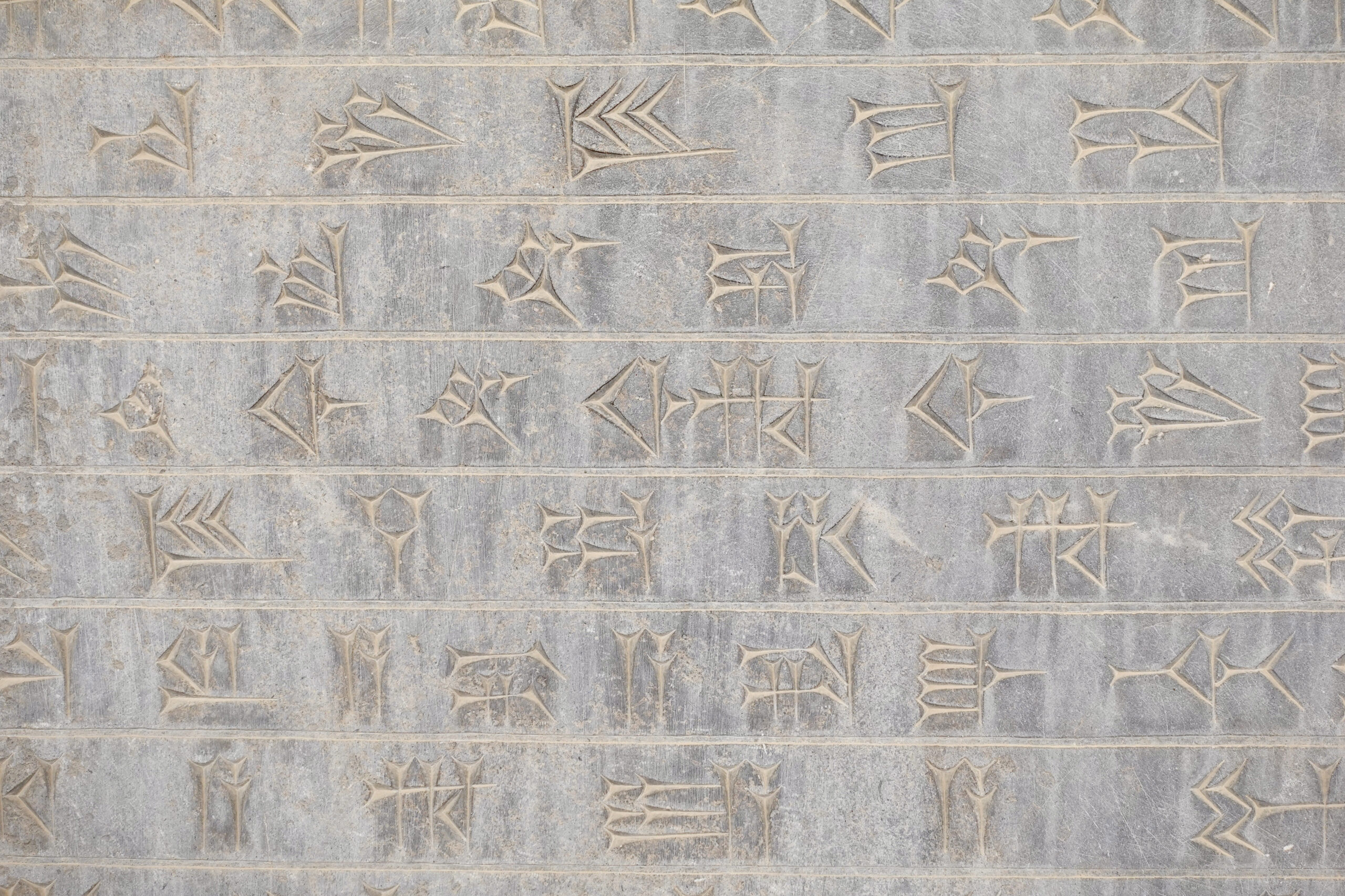
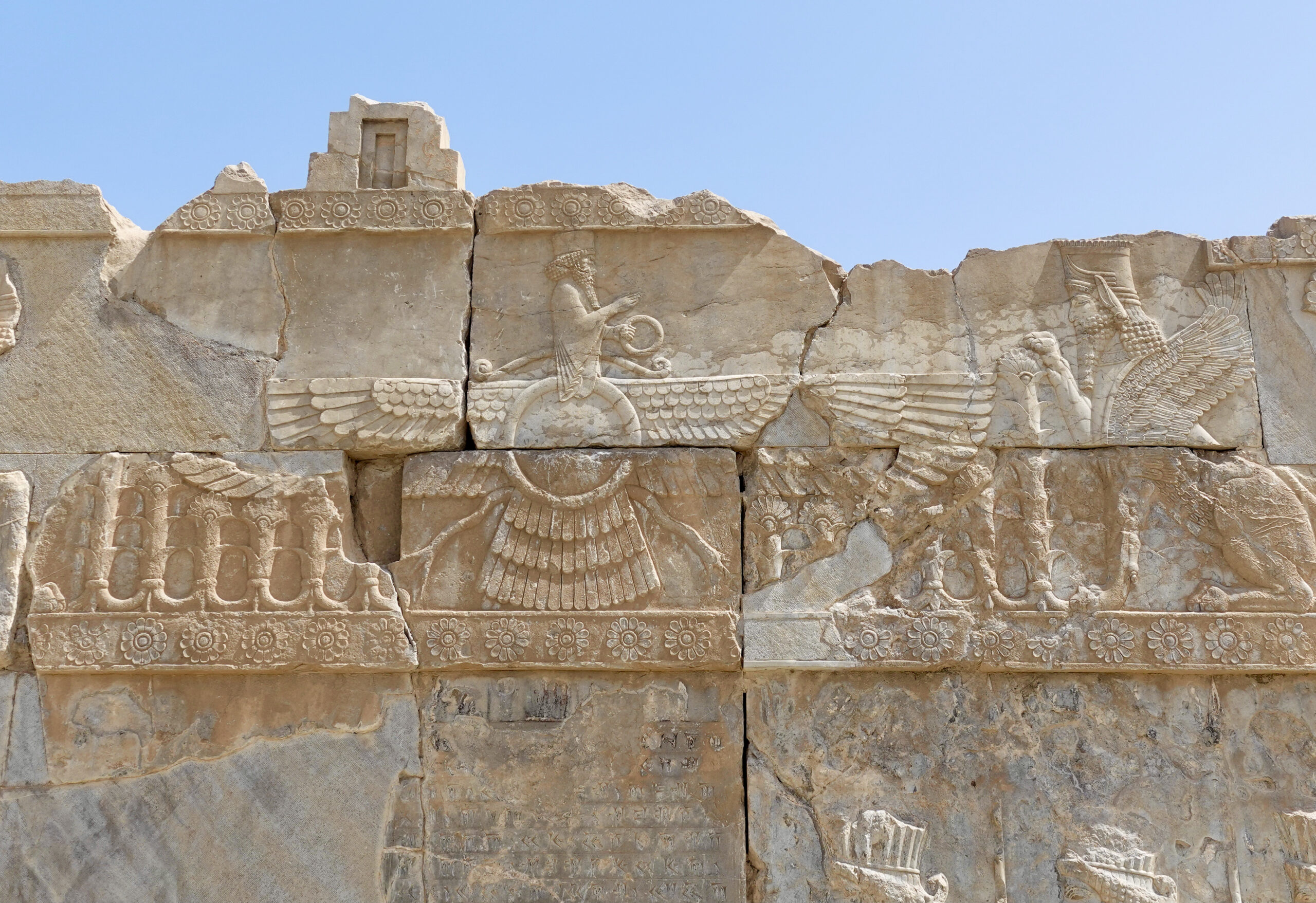
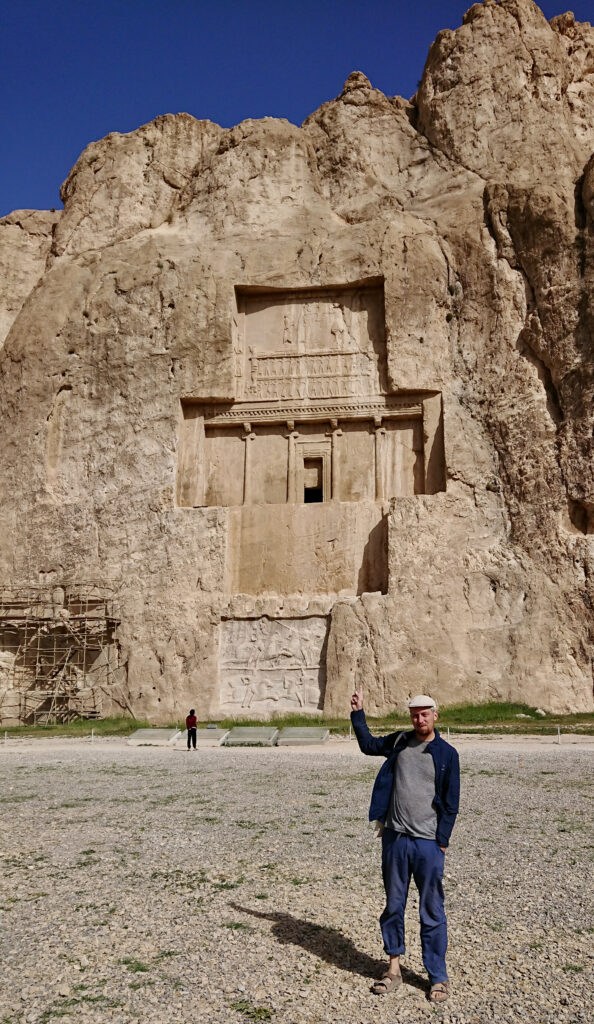
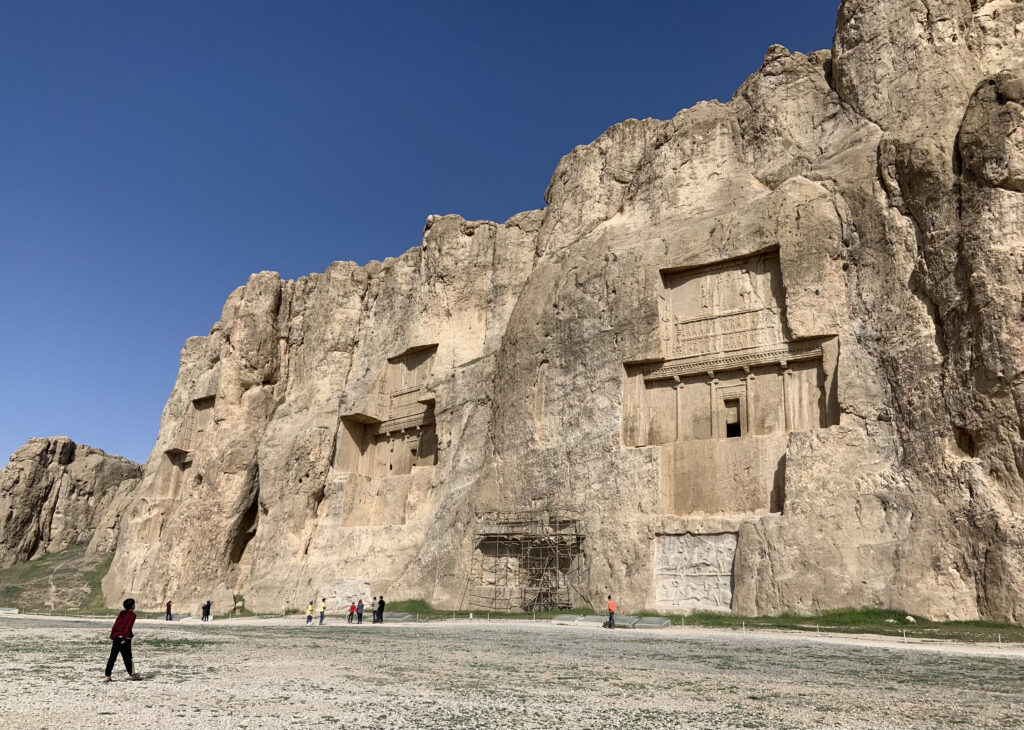
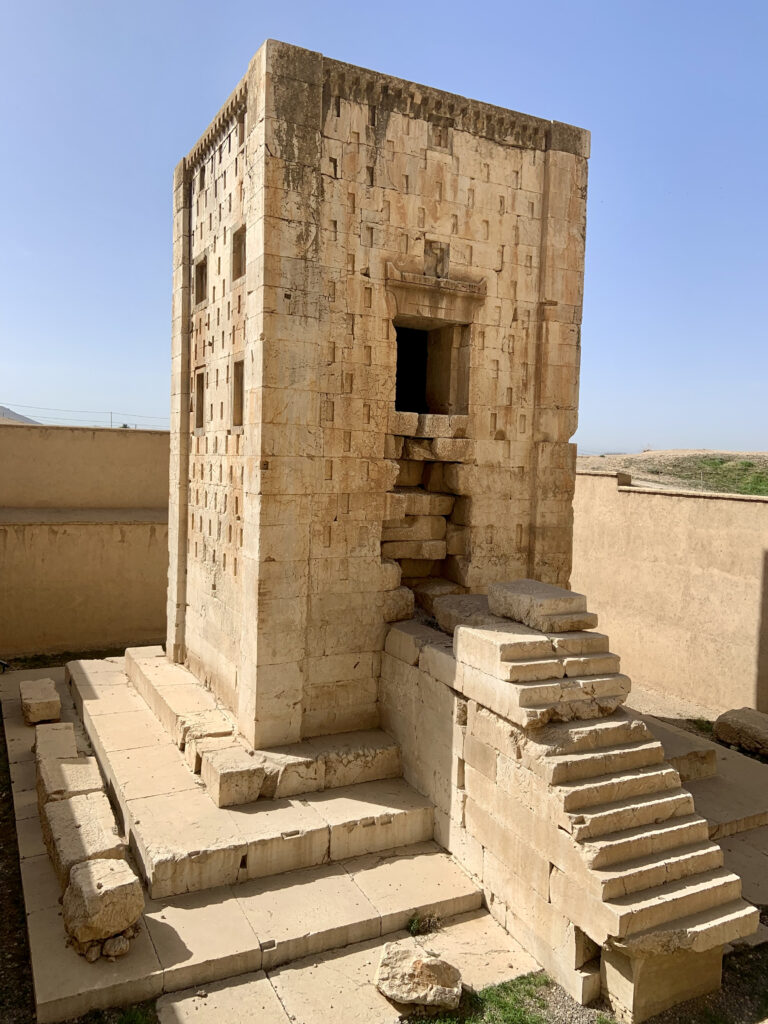
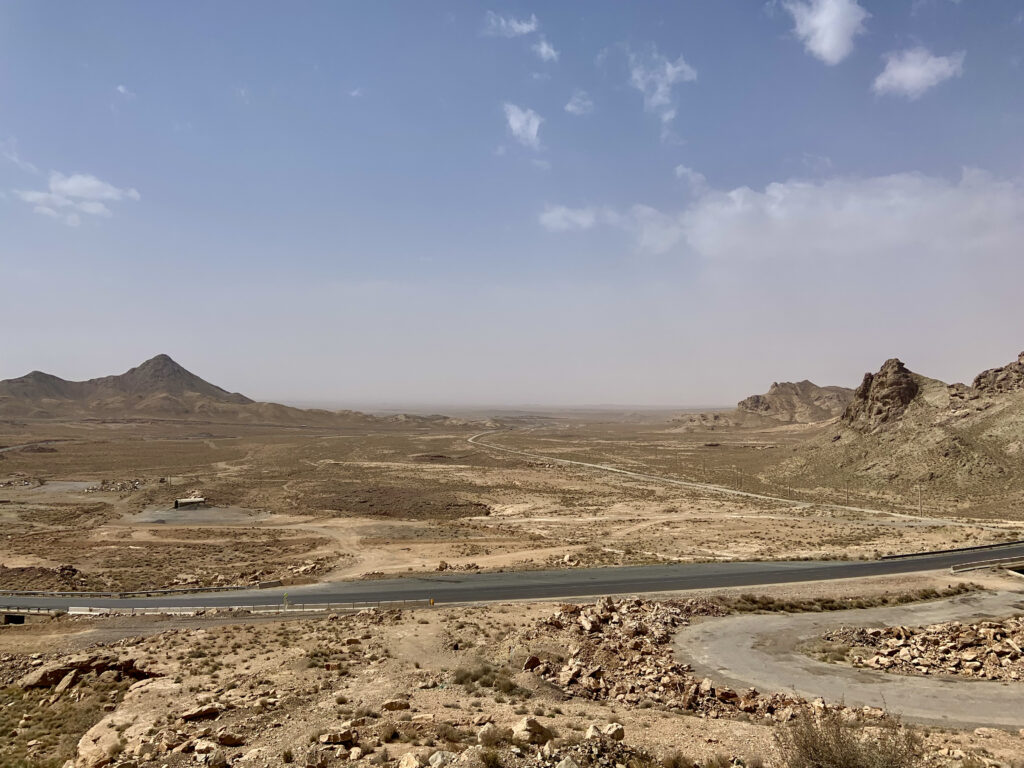

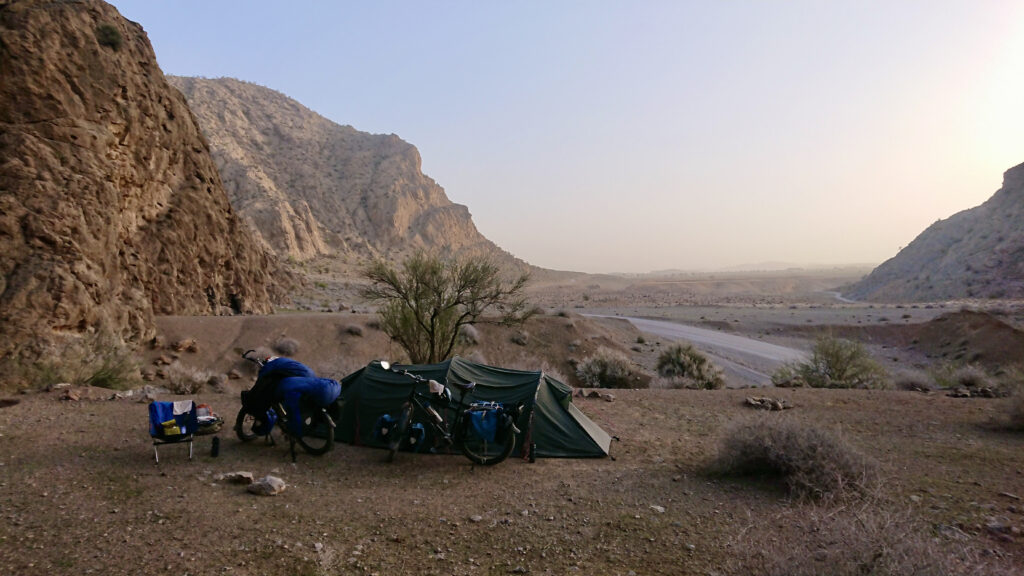
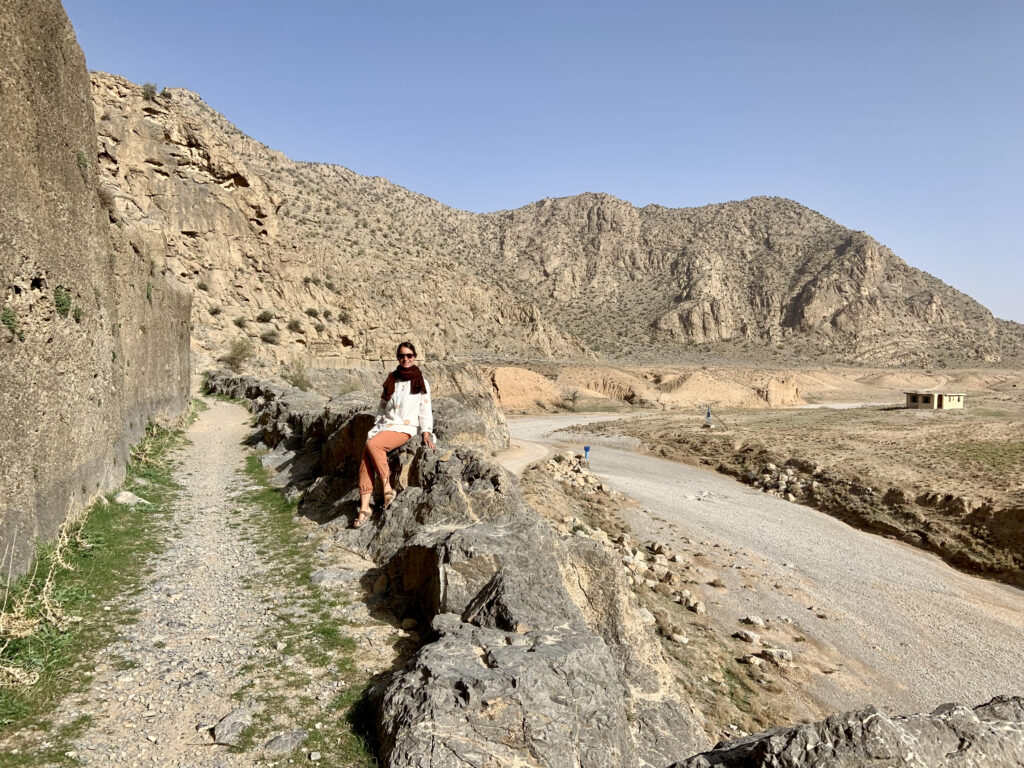
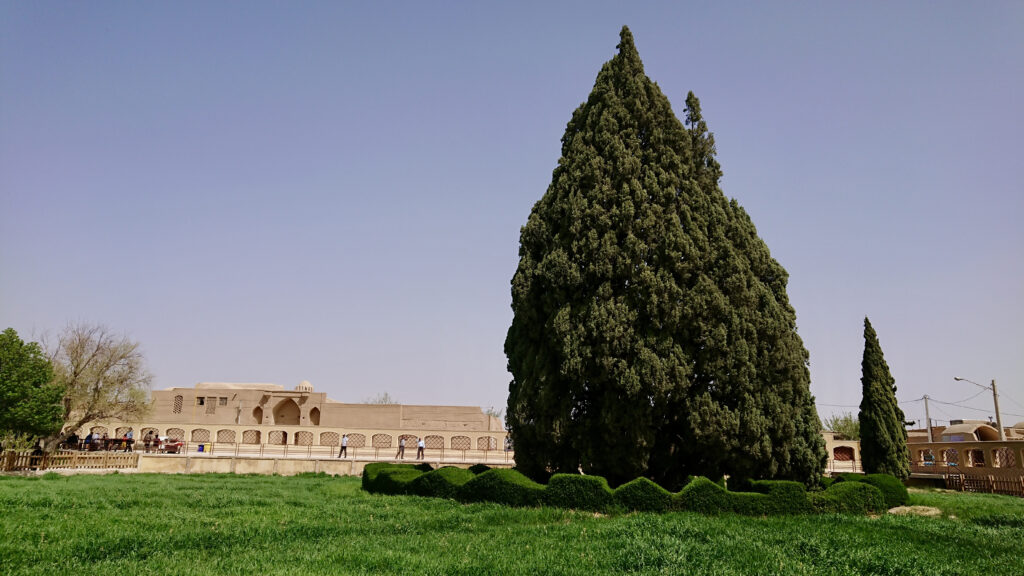
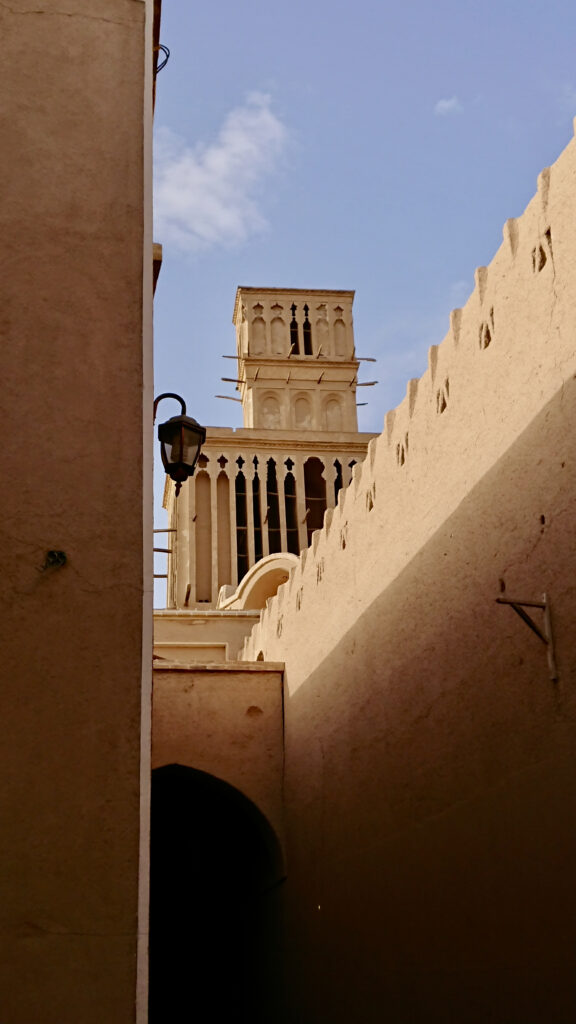
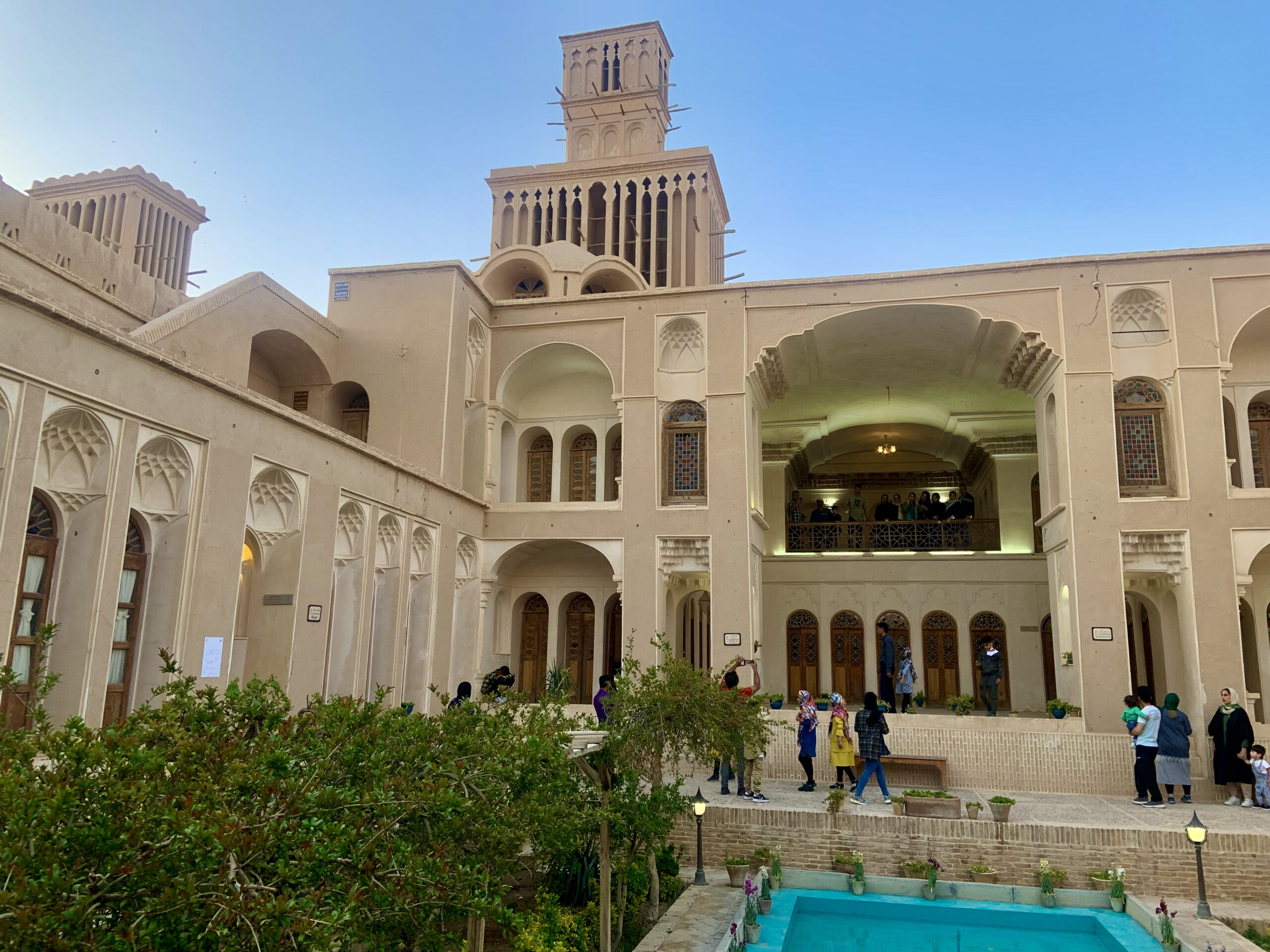
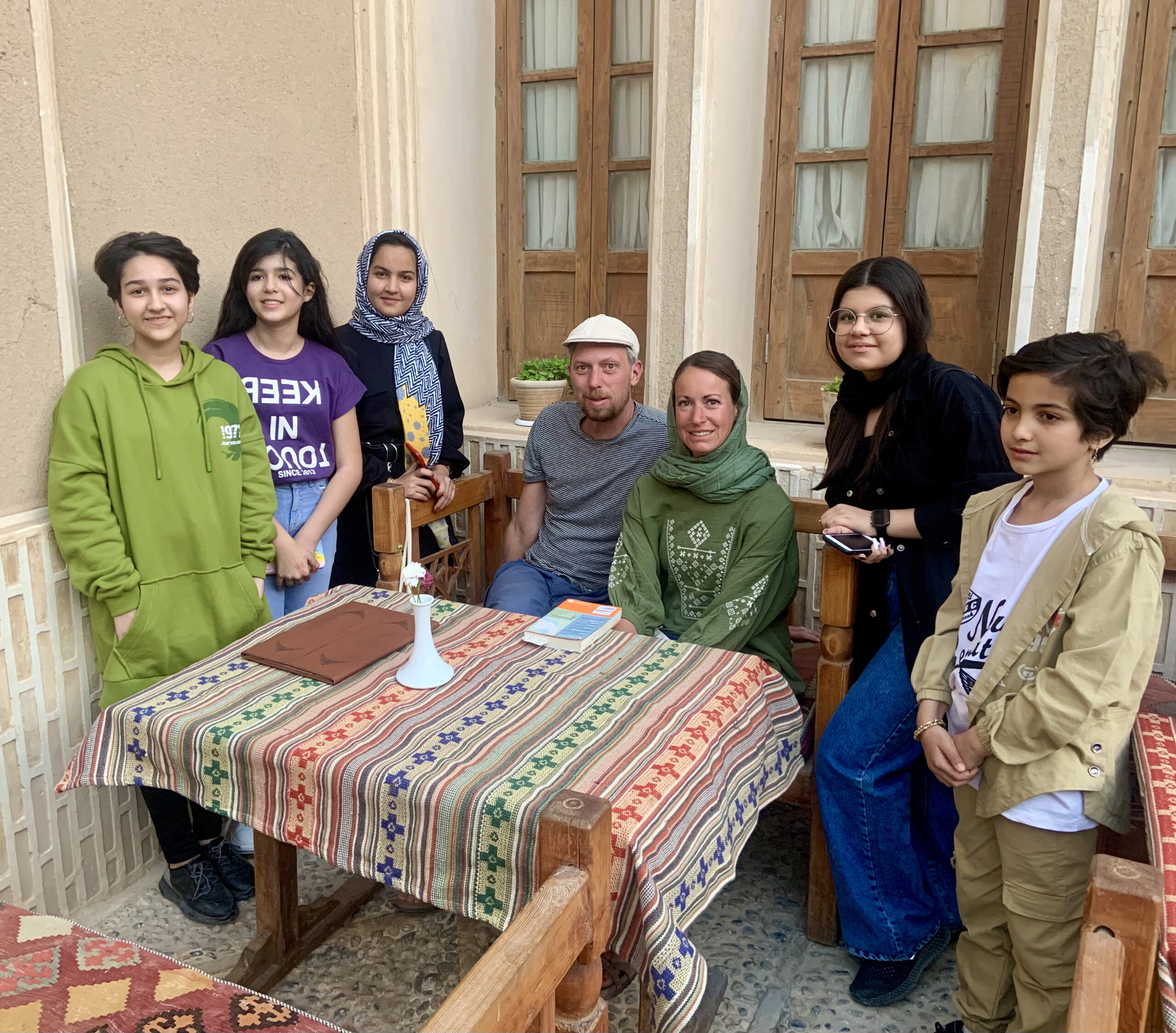
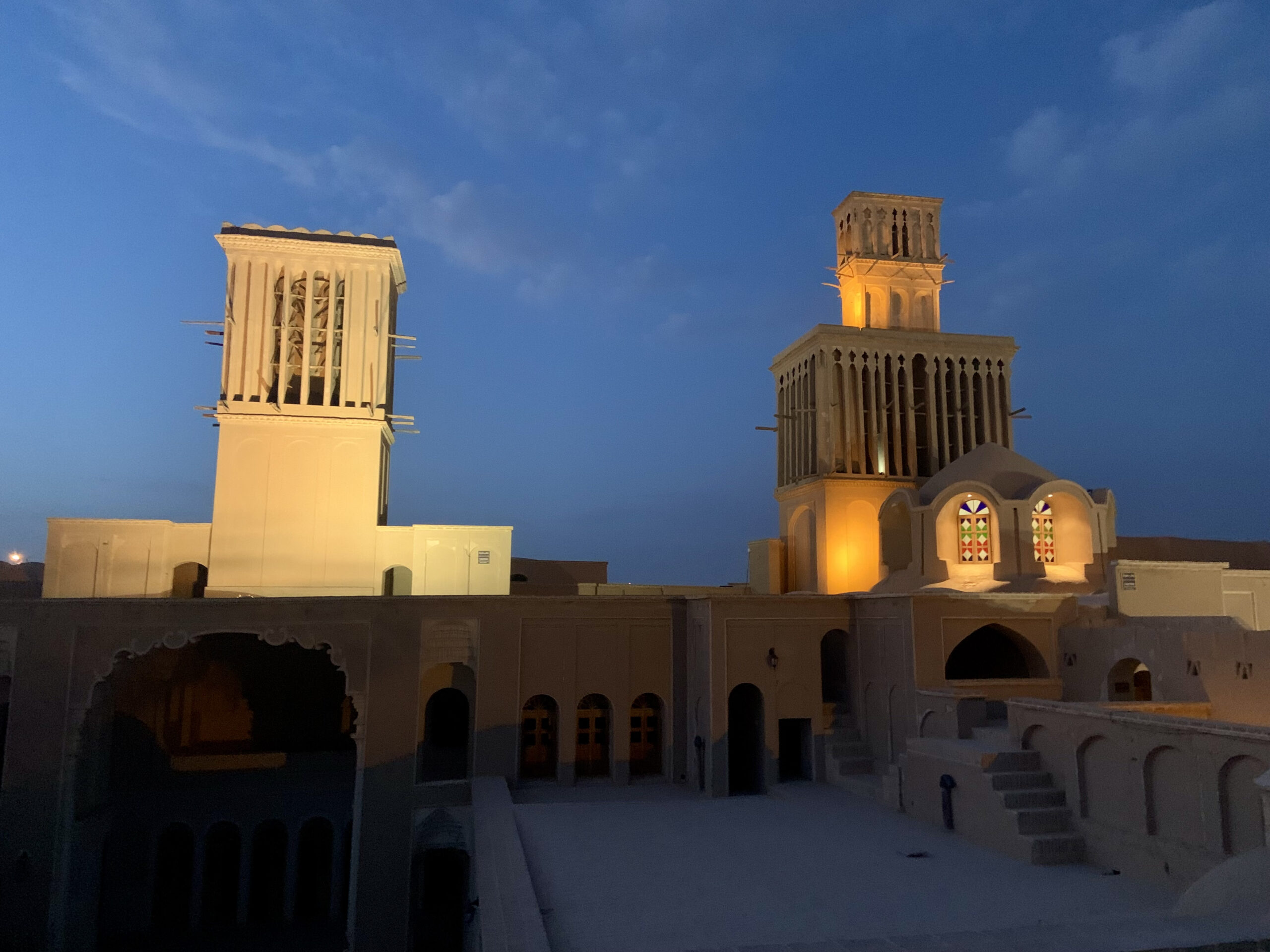
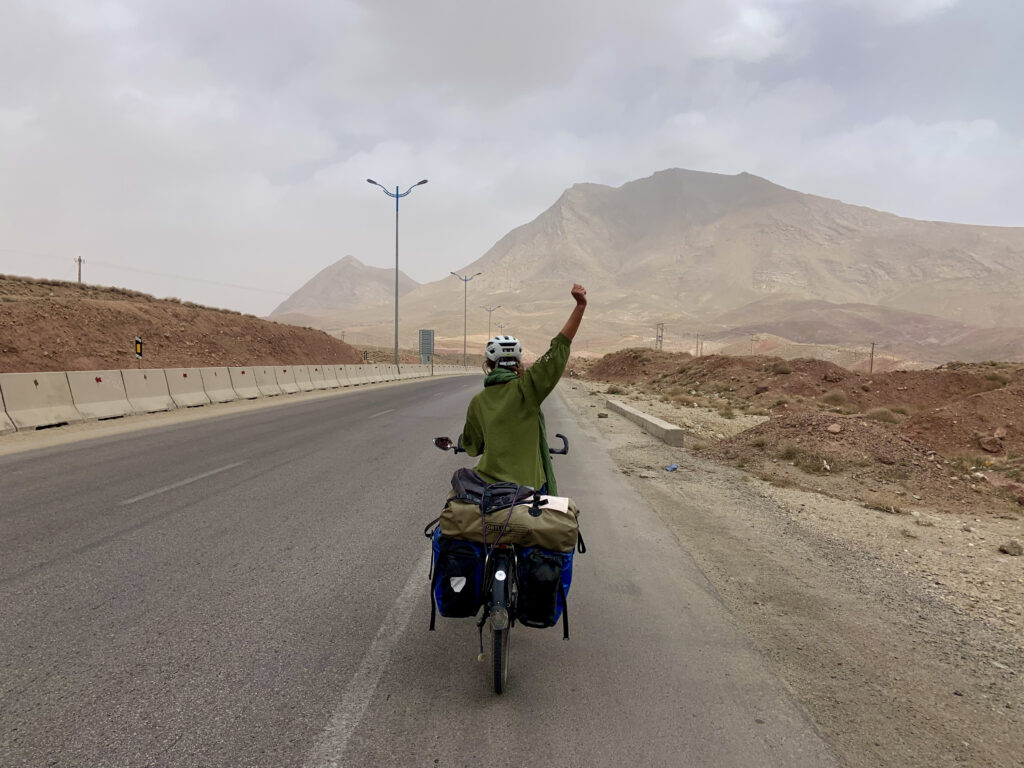

Leave a Reply